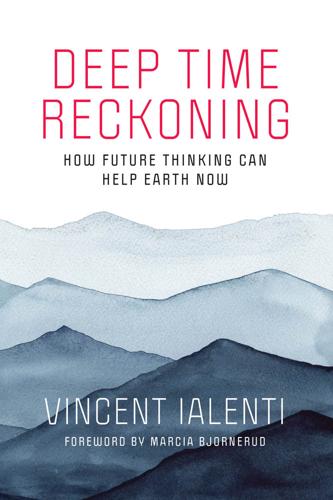
Deep Time Reckoning: How Future Thinking Can Help Earth Now
by
Vincent Ialenti
Published 22 Sep 2020
The US National Academy of Science has hosted an exhibit called “Imagining Deep Time.” Timely books on deep time have recently been published: physicist and science fiction author Gregory Benford’s Deep Time: How Humanity Communicates across the Millennia, historian Martin Rudwick’s Scenes from Deep Time, historian Daniel Lord Smail’s On Deep History and the Brain, paleontologist Stephen Jay Gould’s Time’s Arrow, Time’s Cycle, and nature writer Robert Macfarlane’s Underland: A Deep Time Journey, to name a few.8 Deep Time Reckoning approaches these problems a bit differently. I am a cultural anthropologist.
…
If more people were to ask themselves questions like these, it could help popularize expert-inspired, self-reflective acts of future-gazing. Such popularization could help reverse the deflation of expertise. DEEP TIME’S DOUBLENESS We have seen how far future forecasts are often entangled with both the present moment and the deeper history of human thought. To appreciate this is to appreciate the two-faced character of deep time. There is, after all, a doubleness to deep time: human worlds can be inside of deep time and deep time can, simultaneously, also be inside of human worlds. Let’s first consider the ways that humanity is inside deep time. We are the temporary outcomes of billions of years of biological evolution. We dwell in ecosystems that emerged from around 4.5 billion years of Earth’s geological-climatological history.
…
Classification: LCC TD898.13.F5 I25 2020 | DDC 363.72/89094897—dc23 LC record available at https://lccn.loc.gov/2019053898 d_r0 CONTENTS SERIES FOREWORD FOREWORD PREFACE INTRODUCTION: EMBRACING DEEP TIME LEARNING 1 HOW TO RIDE ANALOGIES ACROSS DEEP TIME 2 HOW FAR FUTURE WORLDS SPROUT FROM SIMPLE REPEATING PATTERNS 3 HOW TO ZOOM IN AND OUT ON DEEP TIME FROM DIFFERENT ANGLES 4 HOW TO FACE DEEP TIME EXPERTISE’S MORTALITY CONCLUSION: ESCAPING SHALLOW TIME DISCIPLINE A DEEP TIME RECKONING LEXICON INDEX SERIES FOREWORD This is at once an odd and exhilarating time to be alive. Our species, Homo sapiens, has had roughly 350,000 years on the planet.
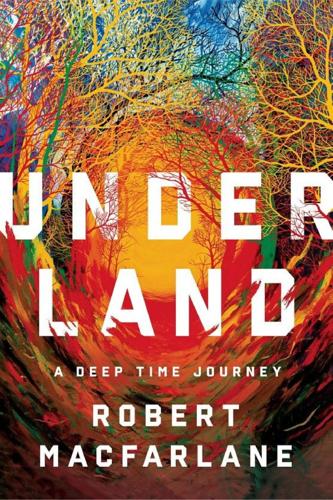
Underland: A Deep Time Journey
by
Robert Macfarlane
Published 1 May 2019
‘The problem,’ writes the archaeologist Þóra Pétursdóttir, ‘is not that things become buried deep in strata – but that they endure, outlive us, and come back at us with a force we didn’t realise they had . . . a dark force of “sleeping giants”’, roused from their deep time slumber. ‘Deep time’ is the chronology of the underland. Deep time is the dizzying expanses of Earth history that stretch away from the present moment. Deep time is measured in units that humble the human instant: epochs and aeons, instead of minutes and years. Deep time is kept by stone, ice, stalactites, seabed sediments and the drift of tectonic plates. Deep time opens into the future as well as the past. The Earth will fall dark when the sun exhausts its fuel in around 5 billion years.
…
We should resist such inertial thinking; indeed, we should urge its opposite – deep time as a radical perspective, provoking us to action not apathy. For to think in deep time can be a means not of escaping our troubled present, but rather of re-imagining it; countermanding its quick greeds and furies with older, slower stories of making and unmaking. At its best, a deep time awareness might help us see ourselves as part of a web of gift, inheritance and legacy stretching over millions of years past and millions to come, bringing us to consider what we are leaving behind for the epochs and beings that will follow us. When viewed in deep time, things come alive that seemed inert.
…
Ahead of us, drawing my eye and tightening my throat, two leaning ten-foot slabs of black rock, more marble than limestone, run off into shadow, angling towards one another. This is a bedding plane, formed when the rock was being laid down as sediment on a seabed. Strata movement has prised the sides of the plane apart millions of years later, water has worked to burnish an absence between them, and our onwards route is into this deep time space, this deep time vice. We enter the bedding plane with trepidation, leaning back on the lower angle of stone, and sliding ourselves onwards into the darkness, the upper plane tilting out and over us. There is no danger of collapse here but the sense of confinement is severe. We submit ourselves to the bedding plane, until at last it tightens to a silted-up sump that is not the end of the passage for water, but is surely the final affordance for our stubborn, unshrinkable human bodies.
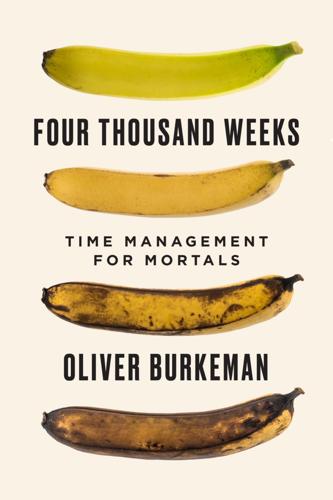
Four Thousand Weeks: Time Management for Mortals
by
Oliver Burkeman
Published 9 Aug 2021
Untroubled by any notion of time “ticking away,” he might have experienced a heightened awareness of the vividness of things, the feeling of timelessness that Richard Rohr, a contemporary Franciscan priest and author, calls “living in deep time.” At dusk, the medieval country-dweller might have sensed spirits whispering in the forest, along with the bears and wolves; plowing the fields, he might have felt himself one tiny part of a vast sweep of history, in which his distant ancestors were almost as alive to him as his own children. We can assert all this with some confidence because we still occasionally encounter islands of deep time today—in those moments when, to quote the writer Gary Eberle, we slip “into a realm where there is enough of everything, where we are not trying to fill a void in ourselves or the world.”
…
Medieval people might speak of a task lasting a “Miserere whyle”: E. P. Thompson, “Time, Work-Discipline, and Industrial Capitalism,” Past and Present 38 (1967): 81. Richard Rohr, a contemporary Franciscan priest and author: Richard Rohr, “Living in Deep Time,” On Being podcast, available at https://www.wnyc.org/story/richard-rohr–living-in-deep-time/ [inactive]. “into a realm where there is enough of everything”: Gary Eberle, Sacred Time and the Search for Meaning (Boston: Shambhala, 2002), 7. “The clock does not stop, of course”: Eberle, Sacred Time and the Search for Meaning, 8. “From a low hill in this broad savanna”: Carl Jung, Memories, Dreams, Reflections (New York: Vintage, 1989), 255.
…
This happens for some people in prayer, or in meditation, or in magnificent landscapes; I’m pretty sure my toddler son spent the whole of his infancy in such a state and is only now beginning to leave it. (Until we get them onto schedules, babies are the ultimate “task-oriented” beings, which, along with sleep deprivation, may explain the otherworldliness of those first few months with a newborn: you’re dragged from clock time into deep time, whether you like it or not.) The Swiss psychologist Carl Jung, visiting Kenya in 1925, was setting out on a hike in the first glow of dawn when he, too, was suddenly plunged into timelessness: From a low hill in this broad savanna, a magnificent prospect opened out to us. To the very brink of the horizon we saw gigantic herds of animals: gazelle, antelope, gnu, zebra, warthog, and so on.
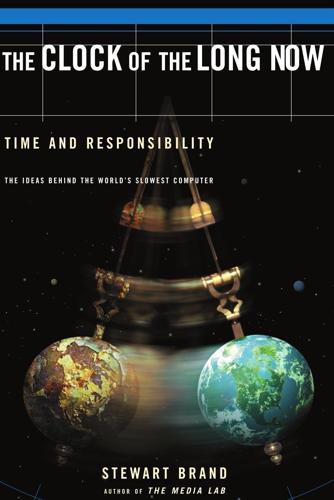
Clock of the Long Now
by
Stewart Brand
Published 1 Jan 1999
I think it is time for us to start a long-term project that gets people thinking past the mental barrier of the Millennium. I would like to propose a large (think Stonehenge) mechanical clock, powered by seasonal temperature changes. It ticks once a year, bongs once a century, and the cuckoo comes out every millennium. Such a clock, if sufficiently impressive and well engineered, would embody deep time for people. It would be charismatic to visit, interesting to think about, and famous enough to become iconic in the public discourse. Ideally, it would do for thinking about time what the photographs of Earth from space have done for thinking about the environment. Such icons reframe the way people think.
…
Journalists have noted the irony—or poetry—of Hillis moving directly from designing and building the world’s fastest supercomputers to designing and building the world’s slowest computer. The ingenuity in the Clock is late twentieth century and so are the materials. The process of constructing a prototype Millennial Clock in 1998 led the builders into direct encounters with deep time. The challenge was to build a prototype that not only worked but would keep working for ten thousand years. Exotic materials were sought for maximum longevity and minimal friction: Monel (nickel-copper alloy) and tungsten carbide for hardness, diamond coating for further hardness, Invar alloy for temperature independence, metallic glass for a potentially inexhaustible pendulum ribbon.
…
I found all this a perfect counterpoint to what I was doing in the winters, studying history of science and technology policy. At Copan, a site with some of the most impressive inscribed stone slabs, there was one with a long count date of more than four billion years. The Maya clearly knew how to celebrate the dance of deep time. Reader, what was the occasion of your longest view? Communal time has been the norm over most of human history, says anthropologist Steve Barnett, and “individual time” only came in with the European Enlightenment. “I knew a guy in south India,” Barnett remarked, “who looked across a field and told me that his ancestors had been farming there, in that place, for three thousand years.

Speaking Code: Coding as Aesthetic and Political Expression
by
Geoff Cox
and
Alex McLean
Published 9 Nov 2012
David Link, “There Must Be an Angel: On the Beginnings of the Arithmetics of Rays,” in Siegfried Zielinski and David Link, eds., Variantology 2: On Deep Time Relations of Arts, Sciences and Technologies (Cologne: König, 2006), 15–42; available at http://www.alpha60.de/research/ muc/. 39. Ibid. 40. Ibid. Interestingly, Link’s essay makes reference to Hegel’s dialectics of essence and appearance. 41. Ibid. 42. David Link, “Scrambling T-R-U-T-H: Rotating Letters as a Material Form of Thought,” in Siegfried Zielinski and Eckhard Fürlus, eds., Variantology 4: On Deep Time Relations of Arts, Sciences and Technologies in the Arabic-Islamic World (Cologne: König, 2010), 215–266. 43.
…
London: Pluto, 2000. Link, David. “Scrambling T-R-U-T-H: Rotating Letters as a Material Form of Thought.” In Siegfried Zielinski and Eckhard Fürlus, eds., Variantology 4: On Deep Time Relations of Arts, Sciences and Technologies in the Arabic-Islamic World, 215–266. Cologne: König, 2010. Link, David. “There Must Be an Angel: On the Beginnings of the Arithmetics of Rays.” In Siegfried Zielinski and David Link, eds., Variantology 2. On Deep Time Relations of Arts, Sciences and Technologies, 15–42. Cologne: König, 2006. Lukács, Georg. History and Class Consciousness: Studies in Marxism. 1922; Cambridge, MA: MIT Press, 1976.
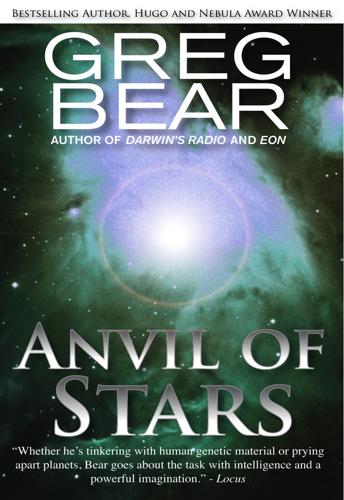
Anvil of Stars
by
Greg Bear
Published 4 Mar 2008
Fake matter is decaying. Within a few hundred years, there will be only the shells of real matter.” “There are no survivors?” Hakim asked. “We guessed that much already,” Martin said. “Not with certainty,” Hakim persisted. “There are no survivors,” the mom said. “The ship’s mind is inoperative. We will search for deep time memory stores.” A hole opened in the side of their craft. Martin pushed himself through first, wrapped in a spherical field with a green balloon of life support. “It’s like being in a soap bubble,” he said. They had not practised with these fields before. Martin pulled down an ephemeral control panel and touched arrows to indicate the direction he wanted to move.
…
Beside him followed a half-sized copper-bronze mom; he had not seen the craft produce the little robot, but no explanations were necessary. The diminutive mom advanced on its own firecracker bursts. “What do I look for?” he asked the little mom. “Ship’s mind will have left a marker that will interact with close fields. The deep time memory store will probably reside within the third homeball, in the densest concentrations of real matter.” His bubble passed through what must have once been the hatch to the weapons store. “This ship wasn’t attacked, was it?” “No,” the little mom said. “It ceased performing its mission.” “Why?”
…
Martin transmitted an image to satisfy their curiosity. A flapping sail of matter tapped the corpse and knocked lines of powder free. He maneuvered around the corpse and pushed deeper. His bubble pulsed suddenly, glowed pale green, returned to normal. “That is the beacon,” the little mom said. “We are near a deep time memory store.” “I’ve found more bodies,” Giacomo said. “Dozens of them. They look like they fell asleep, or died quietly—like they’re lying down.” “The ship must have been accelerating when they died,” Hakim said. “Unless we are seeing peculiar patterns of rigor.” Martin wiped his eyes with a sleeve.
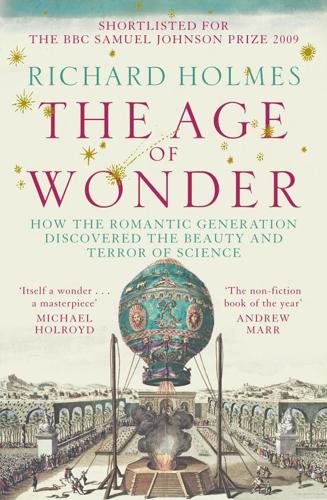
The Age of Wonder
by
Richard Holmes
Published 15 Jan 2008
This was something urged upon him by his old supporter William Watson, who looked forward to conversations ‘on Kant’s metaphysics’, and wished to know how far Herschel agreed with the ‘ground and sources’ of Kant’s philosophy of knowledge.117 Already in a paper of 1802 Herschel considered the idea that ‘deep space’ must also imply ‘deep time’. He wrote in his Preface: ‘A telescope with a power of penetrating into space, like my 40 foot one, has also, as it may be called, a power of penetrating into time past…[from a remote nebula] the rays of light which convey its image to the eye, must have been more than 19 hundred and 10 thousand-that is-almost two million years on their way.’ The universe was therefore almost unimaginably older than people had previously thought. This idea of deep time was one which required a great deal of explanation to the layman.118 Other papers were unsettling in different ways.
…
The geologist Charles Lyell began in 1830 to bring out his classic work Principles of Geology, which would finally use scientific evidence to reject the Biblical account of short-scale creation of the earth, as maintained by every authority from Cuvier and Paley to Buffon and Buckland. Lyell’s proposal of a ‘deep time’ corresponded to the ‘deep space’ cosmology of William Herschel. It would ultimately provide the supportive authority for Charles Darwin, his great friend, to accept the deep time necessary for evolution by natural selection to take place. But during these five years of intense controversy from 1829 to 1834, it was the publication of four literary works that contributed most powerfully to the debate about what ‘a scientist’ really was, or should be.
…
Yet it is also true that Herschel too, despite the evidence of his own Observation Journal, gradually convinced himself that precisely such a moment of instant, sublime discovery had occurred in the garden at New King Street. Herschel in the end may have remembered that night exactly as Keats imagined it.129 6 Journalists began to assess the current scientific views of such phenomena, ranging from the ‘deep time’ geological theories of James Hutton to the ‘deep space’ nebula theories of Herschel. An essayist in the Monthly Review for April 1816 noted archly that there was ‘a studious avoidance of any reference to God’ in any of these brave new theories. He presented them with a certain scepticism. ‘A long dissertation is allotted to the Huttonian Theory of the Earth; but all these speculations, we suppose, must now give way to the “discovery” of Dr Herschel, that planets began their being in the form of nebulous matter, and consist at first of a vast egg of gas!’
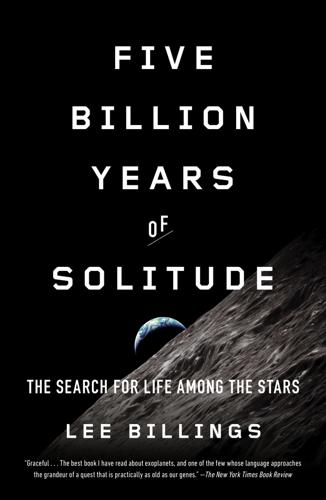
Five Billion Years of Solitude: The Search for Life Among the Stars
by
Lee Billings
Published 2 Oct 2013
Our planet forms at the tip of your left hand’s longest finger, and the Cambrian begins at the wrist of your right arm. The rise of complex life lies in the palm of your right hand, and, if you choose, you can wipe out all of human history “in a single stroke with a medium-grained nail file.” Deep time is something that even geologists and their generalist peers, the earth and planetary scientists, can never fully grow accustomed to. The sight of a fossilized form, perhaps the outline of a trilobite, a leaf, or a saurian footfall can still send a shiver through their bones, or excavate a trembling hollow in the chest that breath cannot fill.
…
The modern era, luminous and fleeting, flashes like lightning above the dark, abyssal eons of the abiding Earth. Immersed in a culture unaware of its own transience, students of geologic time see all this and wonder whether the human race will somehow abide, too. Immiscible emotions emerge from contemplating the dual realities of modern life and deep time—strange amalgams of apathy and anxiety that resist easy dismissal. Against the rich pageant of a planet and its past, the brief activity of a human life shrinks toward futility, even as human habits and behaviors, human choices in aggregate, so forcefully send much of Earth’s complex biosphere sliding into oblivion.
…
Translated into human terms, Lovelock’s and Whitfield’s prediction was equivalent to telling a forty-five-year-old woman that she has only one year left to live. Astronomers, planetary scientists, and geologists were shocked, but outside of these rarefied fields the news of the world’s imminent demise largely fell on deaf ears—a hundred million years might as well be forever. Typical of dwellers in deep time, it would be another decade before scientists revisited the looming end of the world. In 1992, Kasting and his postdoctoral student Ken Caldeira performed a more nuanced calculation of Earth’s photosynthetic decline, one that gave the biosphere a slight reprieve. “Plants photosynthesize, but they also respire—they ‘breathe’ oxygen to help fix carbon in their bodies,” Kasting explained as we approached the lake and began to walk along its shore.
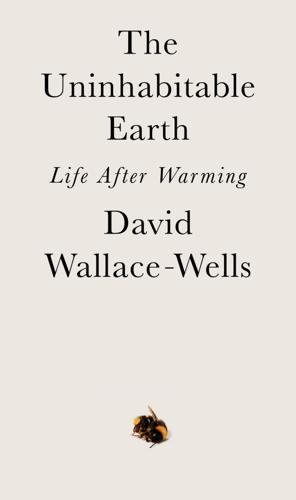
The Uninhabitable Earth: Life After Warming
by
David Wallace-Wells
Published 19 Feb 2019
This is not the “techno-shock” first experienced by Victorians encountering an accelerating pace of progress and feeling overwhelmed by just how much was changing within a single lifetime—though we are now acquainting ourselves with that kind of change, as well. It is more like the overwhelming awe felt by those naturalists contemplating the ancient-beyond-ancient historical grandeur of the earth, and calling it deep time. But climate change inverts the perspective—giving us not a deep time of permanence but a deep time of cascading, disorienting change, so deep that it mocks any pretense of permanence on the planet. Pleasure districts like Miami Beach, built just decades ago, will disappear, as will many of the military installations erected around the world since World War II to defend and secure the wealth that gave rise to them.
…
The strongest hurricanes will come more often, and we’ll have to invent new categories with which to describe them; tornadoes will strike much more frequently, and their trails of destruction could grow longer and wider. Hail rocks will quadruple in size. Early naturalists talked often about “deep time”—the perception they had, contemplating the grandeur of this valley or that rock basin, of the profound slowness of nature. But the perspective changes when history accelerates. What lies in store for us is more like what aboriginal Australians, talking with Victorian anthropologists, called “dreamtime,” or “everywhen”: the semi-mythical experience of encountering, in the present moment, an out-of-time past, when ancestors, heroes, and demigods crowded an epic stage.
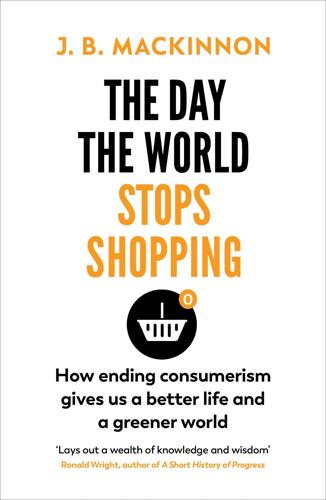
The Day the World Stops Shopping
by
J. B. MacKinnon
Published 14 May 2021
They love growth, and how you can make money quickly,” he said. “It’s the culture. The United States doesn’t have such a long history, and particularly in California, the state still has gold-rush culture. People are still chasing the gold.” There are a few reasons why Japan might have produced so many corporations with a deep-time view of business. For one, the country has been beset throughout its history by terrible earthquakes, fires, tsunamis, recessions and wars. Instead of endless growth, it has been a culture of rise and fall, its people renowned as gamanzuyoi, or “steadfastly patient.” Then there is the fact that, until the late nineteenth century, Japan passed 250 years in isolation under a policy of sakoku, or “closed country.”
…
To the Japanese under sakoku, the idea that natural resources are finite was much more tangible than it is for a modern consumer whose bananas come from Ecuador, their smartphone from China, and their T-shirt from Bangladesh. When you can walk east to west across Japan’s largest island, Honshu, in a matter of days, it’s hardly surprising that you might develop an ethic that considers it madness to throw out three hundred units of a product to fulfill an order for seven hundred. Does Kurokawa feel that deep-time thinking in business is better than short-term thinking? He is an even-minded person, and I admit that I expected him to reply that both are important. Instead he said, “Of course.” He offered one more history lesson: in 1915, Tokyo decided to commemorate their recently deceased emperor with a Shinto shrine and sacred forest.
…
Today the mature forest covers a slow-rising hill alongside Harajuku subway station. It’s a green respite, where a sense of calm prevails and there’s clean air for your lungs—and it is surrounded to the horizon on every side by the megalopolis of Tokyo. Kurokawa became speechless with awe at the brilliance of the deep-time vision. “If you don’t think in that way,” he said at last, “what kind of passion do you have for human life?” People often imagine that long-standing businesses must be dull, unchanging institutions—stuck in their ways. It is a maxim of corporate culture that if you’re not growing, you’re dying.

Material World: A Substantial Story of Our Past and Future
by
Ed Conway
Published 15 Jun 2023
Well, we would finally arrive, late to the party, a few hundred thousand years ago, which is to say: at about a quarter to midnight on New Year’s Eve. Looking at the world through this prism – deep time, as it is sometimes called – is a useful exercise, especially for anyone who assumes that the story of the materials we are using begins when we pull them out of the ground or assemble them in a factory. As I crossed the Great Glen Fault into the Morvern peninsula and began the final leg of the drive towards Lochaline I was also travelling back through deep time. Implausible as it might sound, this windswept landscape of hills and lochs was, once upon a time, an estuary by a tropical sea.
…
The European eel’s long, mysterious migration to the Sargasso Sea; the pole-to-pole journey of the Arctic tern, which can cover a million and a half miles in its lifetime; the rush of king salmon hundreds of miles upstream, up waterfalls, into tearing river torrents. Journeys through the Material World are no less awe inspiring, especially when viewed through the dimension of time. Consider the humble sand grain, a tiny speck of quartz. Over millions of years – sometimes billions – it has witnessed the passage of deep time. It has been rock and then grain and then rock again. It has been compacted into stone, pressed under the earth for hundreds of millions of years before being freed by the erosion of a river or the wind. It has been swirled downstream into estuaries and beachheads, tossed and turned in the tide, packed and compressed back into rock.
…
And each time the waters departed they left behind them crust upon crust of evaporated salts. If this is somewhat difficult to visualise, consider that something similar may be happening with the Mediterranean Sea today. This, by the way, is one of my favourite stories from the occasionally dry world of geology, mainly because it happened not in slow, plodding, deep time but partly in real time. Between 5 and 6 million years ago – long after that meteor crashed into the Great Sand Sea but long before the arrival of Homo sapiens – the Med was cut off from the Atlantic and over hundreds of thousands of years it dried out almost completely, coming to resemble a giant version of today’s Dead Sea.

Paper Knowledge: Toward a Media History of Documents
by
Lisa Gitelman
Published 26 Mar 2014
Mitchell puts it, none of us “only think about media, we think in them,” too.69 Just as Romanticism and its afterglow have had us “dreaming in books” lo these many years—to use Andrew Piper’s resonant phrase— so we have been thinking variously in the handwritten, typed, mimeographed, and photocopied document, some of us across generations as well as throughout lifetimes.70 Each chapter works by recuperating documentary forms and actors who have been neglected by media studies, arguing by example that the field must consider “little tools of knowledge” in addition to larger, glitzier—that is, more intensively capitalized—forms.71 Media studies must continue to aim at media, in short, not just “the Media” as such. Organizing chapters partly around unsung and offbeat heroes72 seconds the work done by Siegfried Zielinski to populate what he terms the “deep time of media” with illuminating dead ends, gee-whizzery, and what-ifs, while it also aligns with Guillory’s observation that documents raise “questions about writing in modernity that cannot be answered by asking these question only of figures such as Joyce, Freud, or Heisenberg.”73 One might, it is true, identify certain canonical documents and their authors—the Declaration of Independence?
…
In pointing out a Carlylean, hero-oriented stripe within recent media archaeology, Erkki Huhtamo and Jussi Parikka have made me sensitive to it here. See Huhtamo and Parikka, “Introduction: An Archaeology of Media Archaeology,” in Huhtamo and Parikka, Media Archaeology, 1–24. 73. Siegfried Zielinski, Deep Time of Media: Toward an Archaeology of Hearing and Seeing by Technical Means, trans. Gloria Custance (Cambridge, MA: mit Press, 2006); Guillory, “The Memo and Modernity,” 114. 74. Michel Foucault, “What Is an Author?” in Michel Foucault, The Foucault Reader, ed. Paul Rabinow (New York: Pantheon, 1984), 101–20.
…
Control through Communication: The Rise of System in American Management. Baltimore, MD: Johns Hopkins University Press, 1989. ———. Structuring the Information Age: Life Insurance and Technology in the Twentieth Century. Baltimore, MD: Johns Hopkins University Press, 2005. Zielinski, Siegfried. Deep Time of Media: Toward an Archaeology of Hearing and Seeing by Technical Means. Translated by Gloria Custance. Cambridge, MA: mit Press, 2006. Zuboff, Shoshana. In the Age of the Smart Machine: The Nature of Work and Power. New York: Basic, 1984. 204 WORKS CITED INDEX Adams, William Taylor, 142 Adobe Systems, 117, 118, 123–28 adolescents.
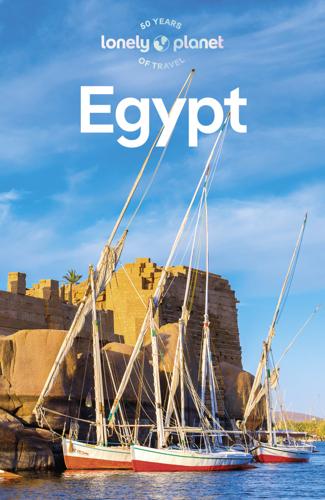
Lonely Planet Egypt
by
Lonely Planet
Minya is prime base for visiting both the Middle Kingdom tombs of Beni Hasan and the remnants of Pharaoh Akhenaten’s ill-fated city. The Red Monastery – one of Coptic Christianity’s finest artistic achievements – lies just outside of Sohag, while the Fayoum region’s clutch of pyramids and ruins begin to look like youngsters compared to the journey into geological deep time at Wadi Al Hitan. Between the key cities much of this region remains agricultural: the narrow thread of green fields, hemmed in by rocky desert escarpment on both sides. Severe economic hardship and limited opportunities, compounded by an exploding population, have dogged this region for decades and since the Islamic insurrection of the 1990s, sporadic outbreaks of social unrest, and the resulting security crackdowns, still occur.
…
. $$ A Trip Back to the Eocene at Wadi Al Hitan ANCIENT WHALES AMID DESERT SANDS This Unesco-listed desert area (and part of the larger Wadi Rayyan Protected Area; entrance US$5), surrounded by low tawny cliffs and punctuated by rock formations sculpted by water and wind, is one of the most important fossil sites in the world. Walking the 3km trail, along which many fossils are displayed where they were found, is an experience in witnessing, and trying to get your mind to function in, the mind-boggling numbers needed to understand deep time. From the visitor centre, the walking track weaves between fossil sites dating from the Eocene epoch, which 40-odd million years ago would have been on the seabed of the shallow Tethys Sea. The best-preserved and largest number of Archaeoceti (primitive whales) ever discovered have been found here, including more than 400 basilosaurus and dorodontus (both rather fierce water predators) skeletons that clearly show the evolution of land-based mammals into sea-going ones as they have vestigial front and back legs.
…
From there turn west to drive across low yellow dunes to points with panoramic views out to a rocky ridgetop called Qasr Arab, due to its resemblance to a hilltop castle, and down to the low Hadiya depression where the sand is speckled with acacias and date palms. Ancient Fayoum FAYOUM’S PHARAONIC HERITAGE With all the desert scenery and deep-time history, don’t forget that Fayoum, with its fertile agricultural land, is rich in human heritage as well. During the Middle Kingdom’s 12th dynasty, Fayoum had its heyday under Amenemhat III (reigned c 1855–1808 BCE), who built the city of Gia now known as Medinat Madi (Arabic for ‘City of the Past’).
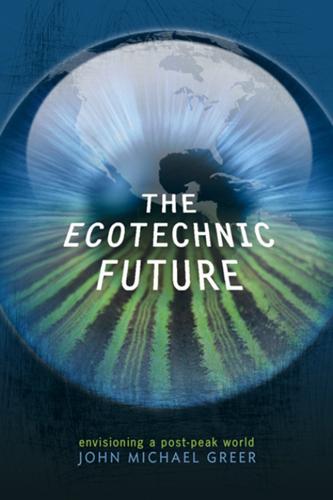
The Ecotechnic Future: Envisioning a Post-Peak World
by
John Michael Greer
Published 30 Sep 2009
As fossil fuels deplete and environments change, in turn, succession comes into play, pushing future technic societies toward more sustainable, K-selected forms, while population cycles of boom and bust take place as well. All this is ecology in action, following patterns found throughout nature across the time scales of population, succession and evolution. On the broadest of those scales, the one evolutionary 61 62 T he E cotechnic F u t u re biologist Stephen Jay Gould named “deep time,”5 an evolutionary leap unquestionably plays a role in shaping our future, but that leap has already happened. The emergence of the first technic societies three centuries ago was a precise equivalent to the leap that sent the first bats winging clumsily through the Paleocene skies, and close equivalents to the potent environmental pressures toward adaptation that shaped those early bats are already coming to bear on humanity.
…
Unlike historical cycles and succession, evolution offers no help to prediction at all; fewer than half a dozen major evolutionary leaps have occurred in the history of our species, though there have been many more minor ones, and the timing of those leaps appears random even in retrospect. In human terms, this pattern works on the scale of deep time, defined by the lifespan of the human species. The historical setting of modern industrial civilization can only be grasped in full against the background of all three of these patterns. In the first or cyclic pattern, as my earlier book The Long Descent showed, industrial civilization is in the early stages of its decline and fall.
…
Ziarek, Ewa Plonowska, An Ethics of Dissensus: Postmodernity, Feminism, and the Politics of Radical Democracy, Stanford University Press, 2001. 261 Index A advertising, 155–156 agriculture, 25–28, 30, 147 amateur radio, 156–157, 216 anacyclosis, 231 Anderson, Sherry Ruth, 200 appropriate ecology, 215–216 Aristotle, 214 Augustine of Hippo, 207 B Bacon, Francis, 214 Bateson, Gregory, 222 bats, evolution of, 58–61 Bell, Daniel biodiesel, 106, 116, 151 biodynamic agriculture, 103 biointensive organic gardening, 103 biophobia, 114–115 Black Death, 87 bog iron, 72 Brand, Stewart, 121–122 brewers, 147 Brown, Lester, 94–5 Burke, Edmund, 79 C Carson, Rachel, 11 Catton, William, 41 ceramics industry, Roman, 135–137 cities in the deindustrial world, 182–186 263 264 T he E cotechnic F u t u re climate change, 41, 50–54 climax community, 21–23, 25, 29–30 cob building, 123 composting, 107–112, 113, 115 Condorcet, Marquis de, 228 conserver society, 12 Costanza, Robert, 15 “crackpot realism,” 16 Crimean War, 80 CTL (coal-to-liquids) fuel production, 161–162 “cultural creatives,” 200–201 culture death, 49–50 culture wars, 191 D dark age(s), xiii, 150, 184 Darwin, Charles, 193 decline and fall of civilizations, 17, 38, 150, 243 deep time, 62 democracy, 186–188 depopulation, 39, 41–43 Dijkstra, Bram, 193–194 disintegration, political and cultural, 40, 46–50 dissensus, 96–99, 246 draft horses, 116–117 E Easter Island, 20, 89 ecology, 3, 17, 187, 215–216, 221, 240ecosophy, 221–222, 241ecotechnic trades, 149 education industry, 153–154 emergy (embodied energy), 71 energy flows, 4–5 energy slaves, 142–144, 152–153 energy subsidies, 165–166 ethanol, 13–14, 106 evolution, 35, 57–62, 96, 192–193, 237–238, 243–244 external proletariat, 195 Extropian movement, 226 Index F farmer’s markets, 24, 127–128 feces as fertilizer, 112–115 feminism, 131–133 Ferguson, Marilyn, 201 fossil fuels, 8–12, 33, 61, 69–70, 134, 159, 164 Friedman, Thomas, 53 Friedrichs, Pete, 156 Fukuyama, Francis, 225–226, 229 fundamentalism, Christian, 205–6 G Gentile, Giovanni, 229 ghost acreage, 41, 42 Ghost Dance, 63 Gibbon, Edward, 54 globalism, 64 Google, 37–8 Gould, Stephen Jay, 62 Grafton, Anthony, 232 H hedgerows, 216 Hegel, Georg Wilhelm Friedrich, 229–230 Holmgren, David, 103 home economics, 131–133 homeostasis, 84–88 household economy, 128–130, 133–134, 138–139 Hubbert, M.
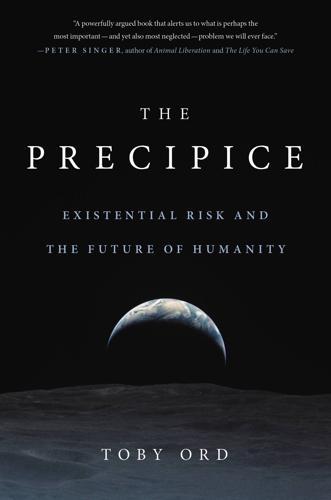
The Precipice: Existential Risk and the Future of Humanity
by
Toby Ord
Published 24 Mar 2020
If each generation had to learn everything anew, then even a crude iron shovel would have been forever beyond our technological reach. But we learned from our ancestors, added minor innovations of our own, and passed this all down to our children. Instead of dozens of humans in cooperation, we had tens of thousands, cooperating across the generations, preserving and improving ideas through deep time. Little by little, our knowledge and our culture grew.7 At several points in the long history of humanity there has been a great transition: a change in human affairs that accelerated our accumulation of power and shaped everything that would follow. I will focus on three.8 The first was the Agricultural Revolution.9 Around 10,000 years ago the people of the Fertile Crescent, in the Middle East, began planting wild wheat, barley, lentils and peas to supplement their foraging.
…
Occasionally, it is considered from the perspective of a group or nation, or even (more recently) from the global perspective of everyone alive today. Understanding what the group should do can help its members see the parts they need to play. We shall sometimes take this a step further, exploring ethics from the perspective of humanity.47 Not just our present generation, but humanity over deep time: reflecting on what we achieved in the last 10,000 generations and what we may be able to achieve in the eons to come. This perspective allows us to see how our own time fits into the greater story, and how much is at stake. It changes the way we see the world and our role in it, shifting our attention from things that affect the fleeting present, to those that could make fundamental alterations to the shape of the longterm future.
…
We shall look in depth at several of the major threats, seeing the most recent science on how they threaten us and how much existential risk they pose. ASTEROIDS & COMETS An asteroid, ten kilometers across, speeds toward the Earth. The chance of a direct collision is tiny—for millions of years it has swung through the Solar System, missing the Earth on every single pass. But given such deep time the chances compound, and this is the day. It slams into the Earth’s surface off the coast of Mexico at more than 60,000 kilometers an hour. A trillion tons of rock moving so fast it strikes with the energy of a hundred times its own weight in TNT. In just seconds, it releases the energy of ten billion Hiroshima blasts: 10,000 times the entire Cold War nuclear arsenal.

The End of Astronauts: Why Robots Are the Future of Exploration
by
Donald Goldsmith
and
Martin Rees
Published 18 Apr 2022
For Burroughs’s influence on Carl Sagan, see “Sagan’s Youth and the Progressive Promise of Space,” Library of Congress, accessed August 15, 2021, https://www.loc.gov/collections/finding-our-place-in-the-cosmos-with-carl-sagan/articles-and-essays/carl-sagan-and-the-tradition-of-science/sagans-youth-and-the-progressive-promise-of-space. 5. John McPhee’s simile appeared in his book Basin and Range (New York: Farrar, Straus & Giroux, 1982) and is quoted in Helen Thompson, “What Does ‘Deep Time’ Mean to You?,” Smithsonian Magazine, September 9, 2014, https://www.smithsonianmag.com/science-nature/what-does-deep-time-mean-to-you-180952603/. 6. Harry McSween quoted in “As Perseverance Approaches Mars, Scientists Debate Its Sampling Strategy,” All-News, February 16, 2021, https://all-news.co/as-perseverance-approaches-mars-scientists-debate-its-sampling-strategy/. 7.

This Will Make You Smarter: 150 New Scientific Concepts to Improve Your Thinking
by
John Brockman
Published 14 Feb 2012
This Will Make You Smarter New Scientific Concepts to Improve Your Thinking Edited by John Brockman Foreword by David Brooks Contents David Brooks: Foreword John Brockman: Preface: The Edge Question Martin Rees “Deep Time” and the Far Future Far more time lies ahead than has elapsed up until now. Marcelo Gleiser We Are Unique Modern science, traditionally considered guilty of reducing our existence to a pointless accident in an indifferent universe, is actually saying the opposite. P.Z. Myers The Mediocrity Principle Everything that you as a human being consider cosmically important is an accident.
…
Here, the term “scientific” is to be understood in a broad sense—as the most reliable way of gaining knowledge about anything, whether it be human behavior, corporate behavior, the fate of the planet, or the future of the universe. A “scientific concept” may come from philosophy, logic, economics, jurisprudence, or any other analytic enterprises, as long as it is a rigorous tool that can be summed up succinctly but has broad application to understanding the world. “Deep Time” and the Far Future Martin Rees President emeritus, the Royal Society; professor of cosmology & astrophysics; master, Trinity College, University of Cambridge; author, Our Final Century: The 50/50 Threat to Humanity’s Survival We need to extend our time horizons. Especially, we need deeper and wider awareness that far more time lies ahead than has elapsed up until now.
…
But even after the sun’s demise, the expanding universe will continue, perhaps forever—destined to become ever colder, ever emptier. That, at least, is the best long-range forecast that cosmologists can offer, though few would lay firm odds on what may happen beyond a few tens of billions of years. Awareness of the “deep time” lying ahead is still not pervasive. Indeed, most people—and not only those for whom this view is enshrined in religious beliefs—envisage humans as in some sense the culmination of evolution. But no astronomer could believe this; on the contrary, it would be equally plausible to surmise that we are not even at the halfway stage.
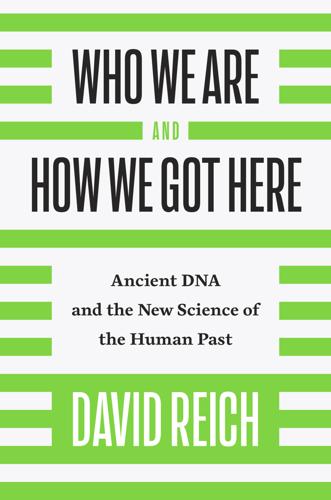
Who We Are and How We Got Here: Ancient DNA and the New Science of the Human Past
by
David Reich
Published 22 Mar 2018
Tracing back fifty thousand years in the past, our genome is scattered into more than one hundred thousand ancestral stretches of DNA, greater than the number of people who lived in any population at that time, so we inherit DNA from nearly everyone in our ancestral population who had a substantial number of offspring at times that remote in the past. There is a limit, though, to the information that comparison of genome sequences provides about deep time. At each place in the genome, if we trace back our lineages far enough into the past, we reach a point where everyone descends from the same ancestor, beyond which it becomes impossible to obtain any information about deeper time from comparison of the DNA sequences of people living today. From this perspective, the common ancestor at each point in the genome is like a black hole in astrophysics, from which no information about deeper time can escape.
…
A trap that researchers of African genetics, archaeology, and linguistics repeatedly fall into is celebrating Africa’s present-day diversity, epitomized by a slide showing the faces of people from across the continent who look very different from each other that many of us use when presenting on Africa. It is tempting to think that in order to comprehend deep time in Africa we need to be able to hold all of that diversity in our heads and explain all of it at once. But most of the present-day population structure of Africa is shaped by the agricultural expansions of the past few thousand years, and so focusing on describing Africa’s mesmerizing diversity paradoxically does the project of understanding the big picture of humans in Africa a disservice just as much as focusing on the common origins of all modern humans in Africa does Africa a disservice.
…
While this story is one we know about because it is close to us in time and involved famous people, there is every reason to think that sex bias has been central to the history of our species. The genome revolution makes it possible to measure sex bias dating to periods for which we have no records, and thus to begin to understand how inequality may have shaped humanity in deep time. The Genomic Signature of Inequality In humans, the profound biological differences that exist between the sexes mean that a single male is physically capable of having far more children than is a single female. Women carry unborn children for nine months and often nurse them for several years prior to having additional children.13 Men, meanwhile, are able to procreate while investing far less time in the bearing and early rearing of each child, a biological difference whose effects are amplified by social factors such as the fact that in many societies, men are expected to spend little time with their children.
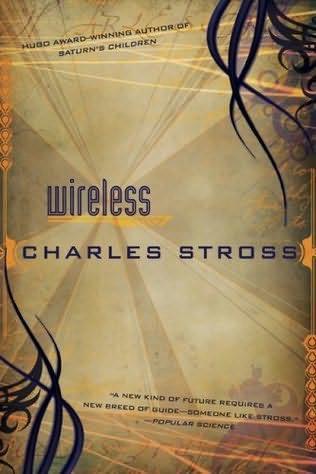
Wireless
by
Charles Stross
Published 7 Jul 2009
Afterword—“Missile Gap” In late 2004, Gardner Dozois—then editor of Asimov’s Science Fiction magazine—asked me if I’d like to write a novella for him. Like many such invitations, it came with strings attached; he was commissioning long stories for an anthology titled One Million A.D. I find tales of the very distant future hard to write. How do you find a way to connect with deep time? Few of us have even a tenuous grasp on the meaning of a single century, let alone a century of centuries of centuries! The sum total of recorded human history is less than six thousand years; few of our institutions have lasted even one millennium without major change. A million years is somewhere between four and twenty times the life span of our entire species (the paleontologists are a little vague on precisely when Homo sapiens sapiens first showed up on the scene).
…
“See me in my office after the tutorial,” she said, then turned her attention back to the rest of the class, leaving him to stew in fearful anticipation. “I do hope you have been paying more attention—” The rest of Yarrow’s lecture slid past Pierce in a delirium of embarrassment as she spoke of deep time, of salami-sliced vistas of continental drift and re-formation, of megayears devoted to starlifting and the frozen, lifeless gigayears during which the Earth had been dislodged from its celestial track, to drift far from the sun while certain necessary restructuring was carried out. She knows me, he realized sickly, watching the pale lips curl around words that meant nothing and everything.
…
When you do so, I would be grateful if you would call me.” He rose to leave. “You will see me again, eventually. Meanwhile, you should bear in mind that you have come to the attention of important persons. Consider yourself lucky—and try to make the best of it.” Three days after Kafka’s departure—summoned back, no doubt, to the vasty abyss of deep time in which Internal Affairs held their counsel—Pierce had another visitor. “I came to thank you,” she said haltingly. “You didn’t need to do that. To decoy, I mean. I’m very grateful.” It had the sound of a prepared speech, but Pierce didn’t mind. She was young and eye-wrenchingly desirable, even in the severe uniform of an Agent Initiate.

How We Got to Now: Six Innovations That Made the Modern World
by
Steven Johnson
Published 28 Sep 2014
But radiocarbon clocks are all about the past. Different elements decay at wildly different rates, which means that they are like clocks running at different time scales. Carbon 14 “ticks” every five thousand years, but potassium 40 “ticks” every 1.3 billion years. That makes radiocarbon dating an ideal clock for the deep time of human history, while potassium 40 measures geologic time, the history of the planet itself. Radiometric dating has been critical in determining the age of the earth itself, establishing the most convincing scientific evidence that the biblical story of the earth being six thousand years old is just that: a story, not fact.
…
When Homo sapiens first crossed the Bering Land Bridge into the Americas more than ten thousand years ago, there were no historians capable of writing down a narrative account of their journey. Yet their story was nonetheless captured by the carbon in their bones and the charcoal deposits they left behind at campsites. It was a story written in the language of atomic physics. But we couldn’t read that story without a new kind of clock. Without radiometric dating, “the deep time” of human migrations or geologic change would be like a history book where all the pages have been randomly shuffled: teeming with facts but lacking chronology and causation. Knowing what time it was turned that raw data into meaning. — HIGH IN THE SOUTHERN SNAKE MOUNTAINS in eastern Nevada, a grove of bristlecone pines grows in the dry, alkaline soil.

Giving the Devil His Due: Reflections of a Scientific Humanist
by
Michael Shermer
Published 8 Apr 2020
Selfish genes drive kin altruism (the propensity to help those who are genetically related to us), and social relations fuel reciprocal altruism (if you’ll scratch my back, I’ll scratch yours); but to achieve species- and bio-altruism, we need to learn higher-order pro-social behavior. Achieving the upper levels of the pyramid requires social and political action. We evolved in a manner in which our concern for the environment and biodiversity was restricted to a few tens of square kilometers, a couple of hundred of species, and a handful of decades. Global ecology and deep time were beyond anyone’s conception until the past half-millennium, which is too short a time for evolution to fundamentally expand the range of our purposeful concerns. Higher purposes are learned and volitionally practiced. What type of purpose should we practice? Although there are countless activities people engage in to feel purposeful, social scientists have discovered that there are a handful of powerful means by which we can bootstrap ourselves toward higher goals that have proven to be especially beneficial to both individuals and society.
…
For thousands of years, we have existed in a zero-sum tribal world in which a gain for one tribe, state, or nation meant a loss for another tribe, state, or nation – and our political and economic systems have been designed for use in that win-lose world. But we have the opportunity to live in a win-win world and become a Civilization 1.0 by spreading liberal democracy and free trade, in which the scientific and technological benefits will flourish. I am optimistic because in the evolutionist’s deep time and the historian’s long view, the trend lines toward achieving Civilization 1.0 status tick ever upward. The free market is the best system yet devised for allowing the most individuals, in the most places, to achieve the most prosperity and highest standard of living most of the time. But there must be strictly enforced rules and conditions in which the free market operates.
…
Hubble subsequently discovered through this same telescope that those galaxies are all red-shifted – their light is receding from us and thus stretched toward the red end of the electromagnetic spectrum – meaning that all galaxies are expanding away from one another, the result of a spectacular explosion that marked the birth of the universe. It was the first empirical data indicating that the universe had a beginning and thus was not eternal. What could be more awe-inspiring – more numinous, magical, spiritual – than this cosmic visage of deep time and deep space? Since I live in Altadena, on the edge of a cliff in the foothills of the San Gabriel mountains atop which Mt. Wilson rests, I have had many occasions to make the trek to the telescopes. In November 2004, I arranged a visit to the observatory for Richard, who was in town on a book tour for The Ancestor’s Tale.
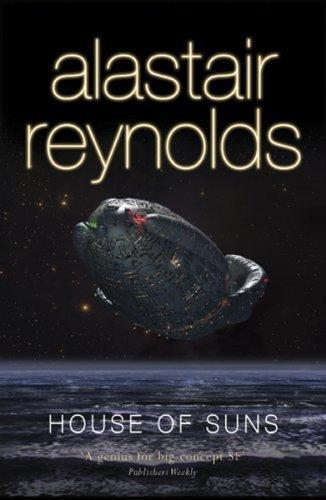
House of Suns
by
Alastair Reynolds
Published 16 Apr 2008
‘You have come a long way. You have outlived almost all the sentient beings who have ever existed, including the Priors.’ ‘I’ve been very, very lucky. Lucky to have been born into Gentian Line, lucky to have been able to live through so much time without experiencing more than a fraction of it.’ ‘To live through deep time would be considered unfortunate?’ ‘I didn’t mean that, rather that I’m carrying a brain not so very different from the ones humans had when we were still hunter-gatherers. There are some modifications that help me process memories and the strands of my fellow shatterlings, but Abigail never touched the deep architecture.
…
‘But on deeper inspection, we’ve found hints of structured enquiry. Those travellers who have made it in and out of the Vigilance, both intact and insane, have found certain data sets prized over others. You value certain forms of information more than others, at least when your transactions are examined over deep time, across countless examples.’ ‘And the nature of this bias?’ ‘Andromeda,’ I said. ‘Specifically, the Absence. Taking the long view, the Vigilance can be seen as having a single, all-consuming purpose - even though that purpose is sometimes obscure. You’re organised to gather every known snippet of data concerning the disappearance of the Andromeda galaxy and anything connected with that event.’
…
‘No,’ Betony said, ‘but it’s been like that for at least a million years, and it should be good for a few million more. It won’t snap, and it’s anchored so deep into the crust it won’t ever fall.’ ‘We could build cities like that if we wanted to,’ Mezereon said, her tone petulant. ‘But we haven’t, and the Benevolence did, and now they’ve left their mark on deep time - whereas we’ll be doing well to be remembered a circuit from now.’ Our shuttles descended further, until we were skimming the dunes at an altitude of only a few kilometres - low enough that we would have seen people, had anyone been abroad. But the endless glittering dunes were lifeless. Betony steered his vehicle under the overhang of the leaning obelisk, as if daring us to follow.
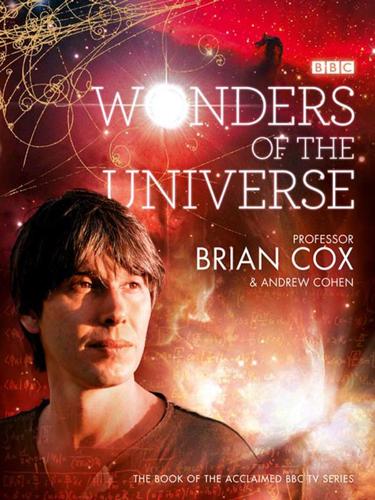
Wonders of the Universe
by
Brian Cox
and
Andrew Cohen
Published 12 Jul 2011
* * * As we stare at Hubble’s masterpiece we are looking back in time; deep time, time beyond human comprehension…the Hubble Ultra Deep Field transports us back through the history of the Universe. * * * However, there is something more remarkable about this image than mere scale, due to the slovenly nature of the speed of light compared to the distances between the galaxies. The thousands of galaxies captured by Hubble are all at different distances from Earth, making this image 3D in a very real sense. But the third dimension is not spatial, it is temporal. As we stare at Hubble’s masterpiece we are looking back in time; deep time, time beyond human comprehension.

Dataclysm: Who We Are (When We Think No One's Looking)
by
Christian Rudder
Published 8 Sep 2014
In Justine’s case, AIDS, racism, and the stubborn, shameful poverty of postcolonial Africa are all enormous problems that tweeting does absolutely nothing to solve. We may think of human sacrifice as something from a savage past, and the physical act might now only exist in films about temples and doom, but the instinct remains within us, seemingly burned by deep time into the reaches of the animal mind. When food is scarce, lions kill their cubs. Fish eat their own eggs. In multiple human pregnancies a womb will sometimes absorb a fetus to preserve the others. To destroy the one for the many is possibly a practice as old as life itself. Now that this ritual is carried out in bits (and thankfully with no actual blood on anyone’s hands, though you get the idea, reading some of these tweets, that people view this as a bug rather than a feature), it’s become a topic we can rigorously study for the first time.
…
most antithetical words for … white women black women Asian women Latinas filipino belle and sebastian bbw midwestern neo soul tanning god my children cincinnati musiq bruins single mother of two classically slow jams tahoe grandson kenya rich dad poor dad simon and garfunkel god my daughter neal corinne bailey rae magnetic fields mother of three shanghai bailey rae sf giants human services financial services salsa bachata flogging molly degree in criminal justice classically trained aaliyah head and the heart single mom of two southern belle jpop dodgers notice my eyes and cutting for stone smh wavy wanna know just ask in new england salsa merengue naked and famous mexican and chinese antarctica nujabes social distortion they are my world kavalier 48 laws of power mountain biking being the best mom full disclosure musiq soulchild portugal. the man raising my children gravitate toward neyo camera obscura a better life for brussels 2ne1 rancid associates degree in toronto esperanza yo la tengo curly hair and march madness mangas paddle boarding madea cambridge zane armin im a single mom adventures of kavalier n.e.r.d santa cruz mexican and italian food creole coldest winter ever ecuador i’m a country girl meetup mines ccr ellen hopkins parentheses ratchet the dog park people notice my eyes arbor aventura bbqing my name is ashley curl up with a malcolm x origami brittany for my next meal asians handshake at a daycare singer songwriters carne gabriela my family my cell ann arbor hw line is it anyway want a man that raleigh earphones sunblock me and my son interpreter of maladies I’ve talked about race a lot so far, and I’ve done so, as I’ve said, because it’s something rarely addressed analytically. And the data I have is ideal for tackling taboos. But sex is the single most important grouping that humanity has. It’s existed forever, even stretching back to when we were just one people, and perhaps because of those deep-time roots, gender roles are more universal and more stubborn than any other. It’s easy to forget, given how ineradicable the color line can seem, that ideas of race are a product of time and place. The Irish and eastern Europeans weren’t considered “white” until the 1900s; in Mexico, the indigenous Mayans and the mestizos with Spanish blood have been distinct ethnic groups (and political opponents) for centuries.
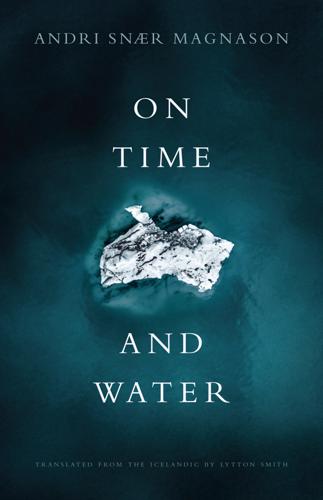
On Time and Water
by
Andri Snaer Magnason
Published 15 Sep 2021
Perhaps that was an overreaction; after all, this manuscript had been stored in damp turf houses for five centuries and transported on horseback in chests across surging glacial rivers; in 1662, it had been sent by ship to Denmark as a gift to King Frederick III. I felt an extreme sensation, a connection to deep time. I spoke practically the same language as the person who’d written the manuscript. Could it last another seven hundred years? Until the year 2700? Would our language and civilization live that long? As a species, humankind has preserved relatively few of its sacred ancient mythologies: ideas about the forces and gods that ruled the heavens and about the genesis and end of the world.
…
Report of the Science Committee, 2018, “Ocean Acidification” (chapter 6), www.vedur.is/loftslag/loftslags-breytingar/loftslagsskyrsla-2018. 68 Jón Ólafsson, “Rate of Iceland Sea acidification from time series measurements,” www.researchgate.net/publication/26636970. 69 Einar Jónsson, “Enn um átu,” Sjómannabladid Víkingur 11–12, 1980, pp. 45–49. 70 Lee R. Kump, Timothy J. Bralower, and Andy Ridgwell, “Ocean Acidification in Deep Time,” Oceanography, 4/22, 2009. 71 https://unfccc.int/sites/default/files/resource/The%20People%27s%20Address%202.11.18_FINAL.pdf. 72 J. E. N. Vernon et al., “The coral reef crisis: The critical importance of <350 ppm CO2,” Marine Pollution Bulletin, www.sciencedirect.com/science/article/pii/S0025326X09003816. 73 Ganopolski, A., Winkelmann, R. & Schellnhuber, H.
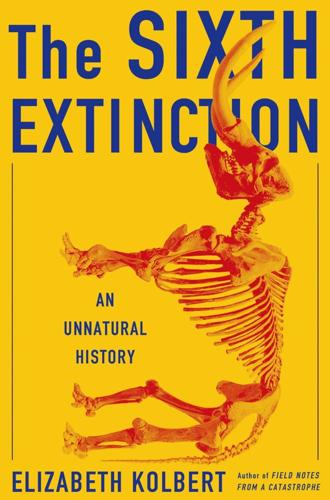
The Sixth Extinction: An Unnatural History
by
Elizabeth Kolbert
Published 11 Feb 2014
“Time is the essential ingredient”: Rachel Carson, Silent Spring, 40th anniversary ed. (Boston: Houghton Mifflin, 2002), 6. But even this spectacular event: Jennifer Chu, “Timeline of a Mass Extinction,” MIT News Office, published online Nov. 18, 2011. “It is the rate”: Lee Kump, Timothy Bralower, and Andy Ridgwell, “Ocean Acidification in Deep Time,” Oceanography 22 (2009): 105. CHAPTER VII: DROPPING ACID “a wall of Coral Rock”: Quoted in James Bowen and Margarita Bowen, The Great Barrier Reef: History, Science, Heritage (Cambridge: Cambridge University Press, 2002), 11. “thrown up to such a height?”: Quoted in ibid., 2. Lyell’s theory: Dobbs, Reef Madness, 147–48.
…
Biodiversity II: Understanding and Protecting Our Biological Resources. Washington, D.C.: Joseph Henry Press, 1997. Kuhn, Thomas S. The Structure of Scientific Revolutions. 2nd ed. Chicago: University of Chicago Press, 1970. Kump, Lee, Timothy Bralower, and Andy Ridgwell. “Ocean Acidification in Deep Time.” Oceanography 22 (2009): 94–107. Kump, Lee R., Alexander Pavlov, and Michael A. Arthur. “Massive Release of Hydrogen Sulfide to the Surface Ocean and Atmosphere during Intervals of Oceanic Anoxia.” Geology 33 (2005): 397. Landman, Neil, et al. “Mode of Life and Habitat of Scaphitid Ammonites.”

Affluenza: The All-Consuming Epidemic
by
John de Graaf
,
David Wann
,
Thomas H Naylor
and
David Horsey
Published 1 Jan 2001
Says Greenway, “On a wilderness trip, it seems to take about four days for people to start dreaming nature dreams rather than ‘busy’ or ‘urban’ dreams. This recurring pattern suggests to me that our culture is only four days deep.”8 In contrast, John McPhee has called the history of life on earth “deep time.” For example, without the ferns, algae, and protozoa of sixty-five million years ago (only yesterday as measured in deep time), we wouldn’t be so preoccupied with petroleum. COMING TO OUR SENSES When we experience nature with our own noses, skin, lungs, and reptilian brains, we feel silly about the stress of obsessive projects and timelines. Self-importance begins to melt into something larger.

The God Species: Saving the Planet in the Age of Humans
by
Mark Lynas
Published 3 Oct 2011
REEF GAPS As I showed in the chapter on climate change, scientists have learned a lot about the future by looking at the past. Over many millions of years, the Earth has seen periods of extreme global warming and associated intervals of very high atmospheric CO2. Did the oceans turn more acidic then? If so, how did coral reefs and other oceanic life-forms survive through to the present day? Here we must learn from the deep-time insights of geology and examine the fossil record for inklings of past events that might serve as analogues for the current human carbon release. The major markers in geological time are the mass extinctions, of which there have been five major episodes in the last half-billion years. Corals, it turns out, were hit hard in all of them.
…
Whiteside et al., 2010: “Compound-Specific Carbon Isotopes from Earth’s Largest Flood Basalt Eruptions Directly Linked to the End-Triassic Mass Extinction,” PNAS, 107, 15, 6721–5. 36. B. van de Schootbrugge et al., 2007: “End-Triassic Calcification Crisis and Blooms of Organic-Walled ‘Disaster Species,’” Palaeogeography, Palaeoclimatology, Palaeoecology, 244, 1–4, 126–41. 37. L. Kump et al., 2009: “Ocean Acidification in Deep Time,” Oceanography, 22, 4, 94–107. 38. M. Medina et al., 2006: “Naked Corals: Skeleton Loss in Scleractinia,” PNAS, 103, 24, 9096–9100. 39. Kump et al., cited above. 40. R. Kerr, 2010: “Ocean Acidification Unprecedented, Unsettling,” Science, 328, 5985, 1500–1. 41. Pelejero et al., cited above. 42.

Falter: Has the Human Game Begun to Play Itself Out?
by
Bill McKibben
Published 15 Apr 2019
The baobab—Africa’s tree of life, in whose shade people first hunted and gathered—can live as long as 2,500 years, but five of the six oldest specimens on the planet have died in the last decade.10 Before century’s end, climate change may kill off the cedars of Lebanon—plundered by Gilgamesh, name-checked in the Bible—as snow cover disappears and sawflies hatch earlier in the heat.11 Even our arks are leaking: with a burst of foresight, the world’s agronomists designed a Global Seed Vault in an Arctic mountain, an impregnable bank where they could save a million varieties of seed covering all the Earth’s important food crops. Eight years after it opened, during the hottest year ever recorded on the planet, melting snow and heavy rain flooded the entrance tunnel and then froze. The seeds weren’t damaged, but the builders were no longer confident that they’d constructed a stronghold that would last into deep time. “It was not in our plans to think the permafrost would not be there and that it would experience extreme weather like that,” a Norwegian government spokesman said.12 And yet nothing slows us down—just the opposite. By most accounts, we’ve used more energy and resources during the last thirty-five years than in all of human history that came before.13 Every economic assumption our governments make about the future requires doubling the size of the economy again, and then again, and then again during the lives of the youngest people on the planet.
…
In California, it’s the sense of ease: the smell of the fire next time lingers in the eucalyptus groves. There are many ways to be poorer, and we’re going to find out all of them. 4 This is a book about being human, but for a moment we need to leave people a little behind and go out to the deep ocean and back into deep time—go, that is, to realms so staggering in their size that we can finally understand the scale of our very human impact. Saltwater first. We erred, though understandably, when we named our planet. “Ocean” would have been more apt, as 70 percent of the surface is covered by the seas. We live on their margins, so our worries are dominated by their rise, their intrusion into our sphere.
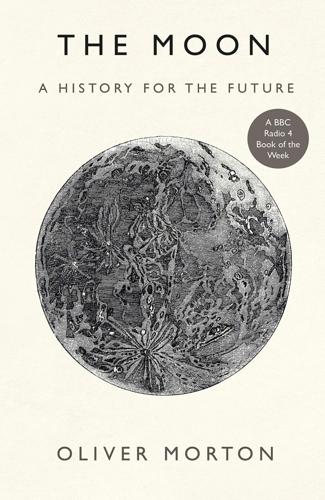
The Moon: A History for the Future
by
Oliver Morton
Published 1 May 2019
As the long 19th century drew to its end, though, a new notion of the future started to come into its own. This modern future differed from the way the future had been thought about before. For one thing, there was more of it. Religion had, until fairly recently, held a firm grip on both time future and time past. Geology’s Deep Time, and Darwin’s, had loosened its backwards grip; physics was breaking its grip entirely as it opened up even greater past depths—and looked forward to a deep future, as well. Christianity had said the world would come to an end; thermodynamics promised the same thing. But the amounts of energy that had been discovered in the atomic nucleus promised relief.
…
And, as we leave the Moon at Taurus Littrow, we leave as we came and, God willing, as we shall return, with peace and hope for all mankind. “Godspeed the crew of Apollo 17.” ITS SURFACE ITS SURFACE IS NOT UNIFORM. BUT ITS VARIATIONS ARE SUBTLE. On Earth, the surface is constantly re-created by cycles operating at every scale, from the deep-time dancing of tectonic plates to the freezing and thawing of dampness in the soil’s pores. Molten magma rises imperiously, shouldering old strata aside; sediments shift and are eroded away. Sand blows into wandering dunes, flour-fine dust into fields of loess. There are limestone pavements, mudflat estuaries, abyssal plains.

Unweaving the Rainbow
by
Richard Dawkins
Published 7 Aug 2011
WILLIAM HENRY, FIRST DUKE OF GLOUCESTER (1829) That splendid volume The Oxford Dictionary of Quotations (1992), from which I have just copied this remark, is itself a damned thick, square doorstop of a book, and about the right size to take us back to the time of Queen Elizabeth I. We have an approximate yardstick of time: 4 inches or 10 cm of book thickness to record the history of one millennium. Having established our yardstick, let's work back to the alien world of geological deep time. We place the book of the most recent past flat on the ground, then stack books of earlier centuries on top of it. We now stand beside the pile of books as a living yardstick. If we want to read about Jesus, say, we must select a volume 20 cm from the ground or just above the ankle. A famous archaeologist dug up a bronze-age warrior with a beautifully preserved face mask and exulted: 'I have gazed upon the face of Agamemnon.'
…
Some recent molecular clock studies have pushed the branch points of various pairs of phyla deep into the Precambrian era. If these studies are right, the whole rhetoric of an evolutionary explosion becomes superfluous. But there is controversy over the interpretation of molecular clock results so far back in deep time, and we should wait for more evidence. Meanwhile, there is a logical argument which I can assert with more confidence. The only evidence in favour of the branch point explosion hypothesis is negative: there aren't any fossils of many of the phyla before the Cambrian. But those fossil animals that have no fossil ancestors must have had ancestors of some kind.

London Under
by
Peter Ackroyd
Published 1 Nov 2011
It is no accident that in the nineteenth century, when the tunnels and subways were first built under the earth, the sciences of palaeontology and archaeology were effectively established. They were concerned with the things beneath. They represented the search for ancient time or what has become known as “deep time.” Before mines were dug in medieval Germany, a ritual was held to propitiate the spirits of the earth. May this book be considered a votive offering to the gods who lie beneath London. We have completed, under their auspices, a long journey through the bowels of the London earth. We have come upon dreams and desires, fears and longings; there have been moments of wonder and moments of terror; the sacred and the profane have been found in close proximity.
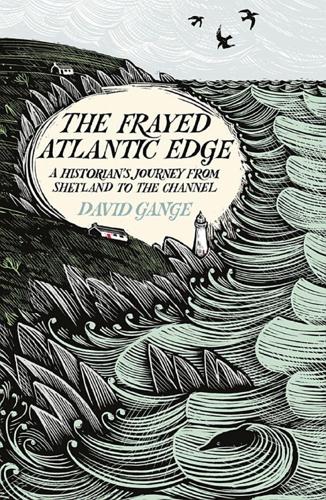
The Frayed Atlantic Edge: A Historian’s Journey From Shetland to the Channel
by
David Gange
Published 10 Jul 2019
Prominent among them are Orkney’s two holy islands, Egilsay and Eynhallow. There is no landscape in Britain, besides perhaps the Wiltshire henges, which matches this few square miles for historic depth and diversity. After a tidal battle at Rousay’s north-western corner I kayaked through freaks of deep time. Wherever the joins in the Devonian sandstone are weak, caves, arches and gloups have formed. The grey, cream and ochre bands of rock – perfectly horizontal – are deeply pitted, leaving narrow pillars of stone, striped like Neopolitan ice cream, to support the cliff face. An airy space, the galleries of a dark drowned Parthenon, stands behind.
…
Could one imagine taking a step, just one step, even on the world we inhabit, that would be as adequate to the ground it covered as is the dolphin’s wave-like plunge to the wave it traverses? Pursuing this logic of attentive being, which recalls no other attitude so much as that of a medieval monk, Robinson’s work offers an orientation of extraordinary precision but also inspires an experience of extreme disorientation as the moment swings into deep time and back. I’d thought most of the temporal contrasts Robinson draws on the day that summed up my wet and windy time in Connemara. This was days before I passed beneath the Aran cliffs, and I still wasn’t sure what implications Robinson’s writing might have for my journey. I was rounding a unique headland that is neither cliff nor shore but as complex as either.

Dawn of the New Everything: Encounters With Reality and Virtual Reality
by
Jaron Lanier
Published 21 Nov 2017
Maybe usable weird avatars foretell creatures the brain might be preevolved to inhabit in the deep future. We might just as easily be exploring preadaptation as prior adaptations for creatures we have the potential to become hundreds of millions of years in the future. * * * Eighteenth VR Definition: Instrumentation to explore the deep time of nervous system adaptations and preadaptations. * * * Haptic Intelligence I’ve always thought that when VR matures someday, then an artwork, a lesson, or a conversation in VR will not be a made up of a virtual place you visit, as current imagination usually holds, but a form you turn into.
…
But it’s completely normal for different individuals to be viable even though we don’t have identical genes. Small changes don’t always crash us. We don’t understand genes entirely, to say the least, but this much is clear: They are robust enough to allow evolution to happen. Evolution is an incremental process. Small changes accumulate over deep time to turn into almost unfathomable changes. From single-celled organisms to us. The crucial microstep along the way is when a small change in genes results in only a small change to the resulting organism. This correlation of small to small happens often enough that the feedback loop at the core of evolution has a chance to function.
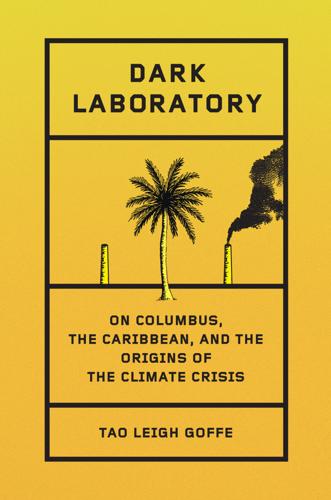
Dark Laboratory: On Columbus, the Caribbean, and the Origins of the Climate Crisis
by
Tao Leigh. Goffe
Published 14 Mar 2025
One of the researchers in my lab said it poignantly on the ship: * * * “It was the sound we did not know we needed to hear.” * * * The whale-watching experience was healing in its immensity: life returning to the Atlantic. We saw three whales that summer day in a majestic aquatic choreography. I thought across deep time: Who else had been immersed in this symphony of humpback whale song? The guide told us that the migratory pattern of these whales went from the Caribbean to New York and back. She said they wintered in the Dominican Republic. Knowing this island to be Hispaniola, I heard the omission of Haiti’s ecology and waters as relevant to the whales.
…
* * * — Montauk had not yet become the Hamptons brand, the tourist destination further erasing the Native tribe’s name by using it. During the New England Hurricane of 1938, Montauk became an island due to extreme flooding. Black feminist meteorology forecasts the future based on cycles of memory and experience over deep time, which is Black geologic time. The Category 5 hurricane originated from the coast of West Africa on September 9. It reached the Sargasso Sea and the Bahamas on September 16. New York was not ready. It arrived on Long Island as a Category 3 hurricane on September 21. Harvard and Yale owned forests as part of their forestry school on Long Island that were ravaged by the 1938 hurricane.
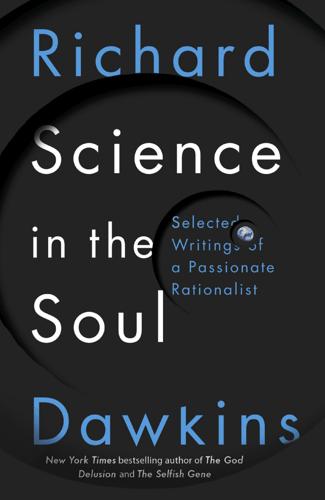
Science in the Soul: Selected Writings of a Passionate Rationalist
by
Richard Dawkins
Published 15 Mar 2017
Though I wouldn’t use the exact phrase, it is in this sense of a ‘deeply religious nonbeliever’ that I consider myself a ‘spiritual’ person, and it is in this sense that I unapologetically use ‘soul’ in the title of this book. Science is both wonderful and necessary. Wonderful for the soul – in contemplation, say, of deep space and deep time from the rim of the Grand Canyon. But also necessary: for society, for our well-being, for our short-term and long-term future. And both aspects are represented in this anthology. I’ve been a science educator all my adult life, and most of the essays collected here stem from the years when I was the inaugural Charles Simonyi Professor of the Public Understanding of Science.
…
Or a paleontologist, and we’d have heard about potassium–argon dating, and about the near-impossibility, for the human mind, of grasping the sheer vastness of geological time. The geologist would have used one of those metaphors with which we struggle – and usually fail – to understand geological deep time. My own favourite one I didn’t invent, I hasten to add, although I did use it in one of my books. As follows: Fling your arms wide to represent the whole history of evolution from the origin of life at your left fingertip to the present day at your right fingertip. All the way across your midline to well past your right shoulder, life consists of nothing but bacteria.

Ways of Being: Beyond Human Intelligence
by
James Bridle
Published 6 Apr 2022
But do you need to know that in order to understand, intuitively, the significance of these carvings, the sacredness of these standing stones? No visitor does. To walk in and around the complex is to realize immediately that this was a sacred site, and to experience the absolute possibility of connection across deep time – to people very different to ourselves, and yet immediately recognizable. The megaliths of Göbekli Tepe. The discovery of Göbekli Tepe, like that of Bruniquel, overturns everything we thought we knew about prehistory. Until this point, it was believed that early humans – pre-agricultural hunter-gatherer bands – had no significant architecture, little complex social organization and even less culture.
…
They are not law-givers, but interlocutors, teachers and guides to better ways of living. In Sand Talk: How Indigenous Thinking Can Save the World, Tyson Yunkaporta quotes a Tasmanian Aboriginal boy called Max: ‘Stones to me are the objects that parallel all life, more so than trees or mortal things because stones are almost immortal. They know things learned over deep time. Stone represents earth, tools and spirit; it conveys meaning through its use and through its resilience to the elements. At the same time it ages, cracking and eroding as time wears it down, but it is still there, filled with energy and spirit.’40 What would it mean for computers to speak more like Aboriginal stones than industrial ones?

Accelerando
by
Stross, Charles
Published 22 Jan 2005
"At the beginning of the twentieth century, there were roughly two million species of vertebrate and an estimated thirty or so million species of multicellular organisms – it's hard to apply the same statistical treatment to prokaryotes, but doubtless there were huge numbers of them, too. The average life span of a species is about five megayears. It used to be thought to be about one, but that's a very vertebrate-oriented estimate – many insect species are stable over deep time. Anyway, we have a total sample, from all of history, of only fifty thousand known prehistoric species – out of a population of thirty million, turning over every five million years. That is, we know of only one in a million life-forms, of those that ever existed on Earth. And the situation with human history is even worse."
…
Long-term, I want to acquire a total lock on the history futures market by having a complete archive of human experiences, from the dawn of the fifth singularity on up. No more unknown extinct species. That should give us something to trade with the next-generation intelligences – the ones who aren't our mind children and barely remember us. At the very least, it gives us a chance to live again, a long way out in deep time. Alternatively, it can be turned into a lifeboat. If we can't compete with our creations, at least we've got somewhere to flee, those of us who want to. I've got agents working on a comet, out in the Oort cloud – we could move the archive to it, turn it into a generation ship with room for billions of evacuees running much slower than real-time in archive space until we find a new world to settle."
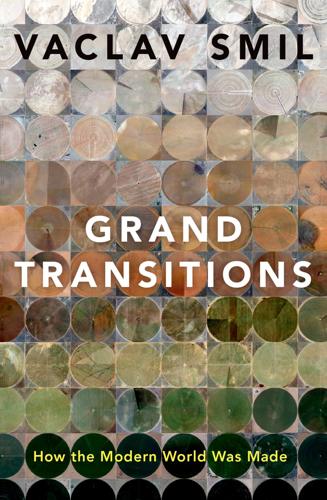
Grand Transitions: How the Modern World Was Made
by
Vaclav Smil
Published 2 Mar 2021
When humanity was compared to a natural geomorphic force of denudation, he concluded, “in a densely developed country like England, Man is many times more powerful, as an agent of denudation, than all the atmospheric denuding forces combined” (Sherlock 1922, 333). Wilkinson (2005) made an attempt to express this removal of rocks and sediment by viewing it in a deep-time perspective. He found that during the past half a billion years natural denudation processes lowered continental surfaces by a few tens of meter per million years while modern construction and food production have been transporting sediment and rock at rates that would imply lowering all of the Earth’s non-glaciated surfaces by a few hundred meters per million year.
…
Household air pollution from cooking, heating and lighting. http://www.who.int/sustainable-development/housing/health-risks/household-air-pollution/en/ WHO. 2018c. Antibiotic resistance. http://www.who.int/news-room/fact-sheets/detail/antibiotic-resistance Wicherek, S., ed. 1993. Farm Land Erosion. Amsterdam: Elsevier. Wilkinson, B.H. 2005. Humans as geologic agents: A deep-time perspective. Geology 33:161–164. Wilkinson, B.H. and B.J. McElroy. 2007. The impact of humans on continental erosion and sedimentation. Geological Society of America Bulletin 119:140–156. Willekens, F. 2014. Demographic Transitions in Europe and the World. Rostock: Max Planck Institute for Demographic Research.
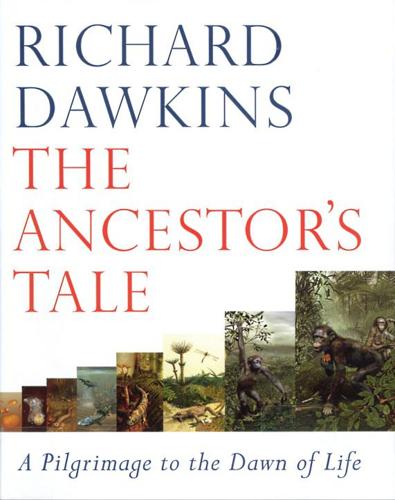
The Ancestor's Tale: A Pilgrimage to the Dawn of Evolution
by
Richard Dawkins
Published 1 Jan 2004
We have not travelled far on our backward pilgrimage. The next rendezvous, our meeting with the chimpanzee pilgrims at Rendezvous 1, is millions of years away, and most of our rendezvous are hundreds of millions beyond that. To stand a chance of completing our pilgrimage, we shall need to speed up, and begin the move into 'deep time'. We must accelerate past the rest of the 30 or so ice ages that typify the last three million years, past such drastic events as the drying and refilling of the Mediterranean that occurred between 4.5 and 6 million years ago. To ease this initial acceleration, I shall take the otherwise unusual liberty of stopping at a few intermediate milestones en route, and allowing dead fossils to tell tales.
…
Molecular comparison now suggests that the phyla are much more connected than we ever thought they were. In a sense that was always obvious -- nobody believed the animal phyla arose separately from primordial slime. They had to be connected to each other, in the same sort of hierarchical patterns as their constituent parts. It was just that the connections were hard to see, lost in deep time. There were exceptions. The protostome/deuterostome grouping above the phylum level was admitted, based on embryology. And within the protostomes it was widely accepted that the annelid worms (segmented earthworms, leeches and bristle worms) were related to arthropods, both having a segmented body plan.
…
Unlike the Bilateria, they are radially symmetrical about a central mouth. They have no obvious head, no front or rear, no left or right, only an up or down. What is the date of the rendezvous? Well, who knows? In order to draw rendezvous points in proportional positions in the diagrams that accompany them, it is necessary to set a date. But out here in deep time, there is so much uncertainty that we can do little but space our dates out to the nearest 50 or even 100 million years. Anything smaller would convey a false sense of precision. Some authorities would disagree by hundreds of millions of years. Because they are among our most distant animal cousins (some were once even confused with plants), the cnidarians are often regarded as very primitive.

The Great Derangement: Climate Change and the Unthinkable
by
Amitav Ghosh
Published 16 Jan 2018
It was in this way that I too became aware of the urgent proximity of non-human presences, through instances of recognition that were forced upon me by my surroundings. I happened then to be writing about the Sundarbans, the great mangrove forest of the Bengal Delta, where the flow of water and silt is such that geological processes that usually unfold in deep time appear to occur at a speed where they can be followed from week to week and month to month. Overnight, a stretch of riverbank will disappear, sometimes taking houses and people with it; but elsewhere a shallow mudbank will arise and within weeks the shore will have broadened by several feet. For the most part, these processes are, of course, cyclical.

The Singularity Is Nearer: When We Merge with AI
by
Ray Kurzweil
Published 25 Jun 2024
Zalta (Winter 2019), https://plato.stanford.edu/entries/evolution-before-darwin; Christoph Marty, “Darwin on a Godless Creation: ‘It’s Like Confessing to a Murder,’ ” Scientific American, February 12, 2009, https://www.scientificamerican.com/article/charles-darwin-confessions. BACK TO NOTE REFERENCE 70 For more on Charles Lyell’s work and its influence on Darwin, see Richard A. Fortey, “Charles Lyell and Deep Time,” Geoscience 21, no. 9 (October 2011), https://www.geolsoc.org.uk/Geoscientist/Archive/October-2011/Charles-Lyell-and-deep-time; Gary Stix, “Darwin’s Living Legacy,” Scientific American 300, no. 1 (January 2009): 38–43, https://www.jstor.org/stable/26001418; Charles Darwin, On the Origin of Species, 6th ed. (London: John Murray, 1859; Project Gutenberg, 2013), https://www.gutenberg.org/files/2009/2009-h/2009-h.htm.

Squid Empire: The Rise and Fall of the Cephalopods
by
Danna Staaf
Published 14 Apr 2017
FIGURES 4.1A & 4.1B The shift in continental position from 180 million years ago (early Jurassic) (top) to 80 million years ago (late Cretaceous) (bottom). Note the breakup of Pangaea, the appearance of the Western Interior Seaway, and the opening of waterways all around Antarctica. Global Paleogeography and Tectonics in Deep Time, © 2016 Colorado Plateau Geosystems, Inc. On land, vertebrates were getting quite busy. The Triassic is known for the evolution of the first dinosaurs and mammals, although they were limited in size and abundance, and were preyed upon by enormous proto-amphibians called Temnospondyli. The mostly landlocked environment was dry and barren, a far cry from the lush terrestrial world of the later Mesozoic.
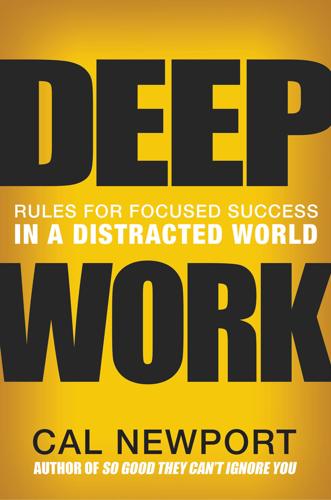
Deep Work: Rules for Focused Success in a Distracted World
by
Cal Newport
Published 5 Jan 2016
Jung’s life in Zurich, in other words, is similar in many ways to the modern archetype of the hyperconnected digital-age knowledge worker: Replace “Zurich” with “San Francisco” and “letter” with “tweet” and we could be discussing some hotshot tech CEO. Jung’s approach is what I call the bimodal philosophy of deep work. This philosophy asks that you divide your time, dedicating some clearly defined stretches to deep pursuits and leaving the rest open to everything else. During the deep time, the bimodal worker will act monastically—seeking intense and uninterrupted concentration. During the shallow time, such focus is not prioritized. This division of time between deep and open can happen on multiple scales. For example, on the scale of a week, you might dedicate a four-day weekend to depth and the rest to open time.
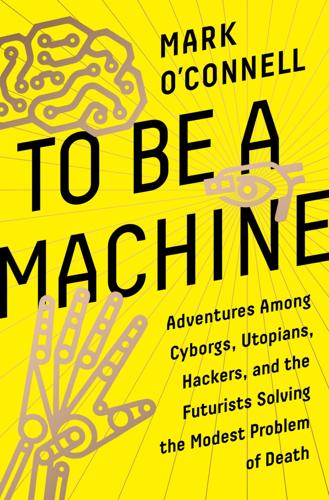
To Be a Machine: Adventures Among Cyborgs, Utopians, Hackers, and the Futurists Solving the Modest Problem of Death
by
Mark O'Connell
Published 28 Feb 2017
And in this messianic vision, machine intelligence will come to redeem the universe of its incalculable stupidity. He takes a goal-oriented approach to cosmology, imposing upon the universe itself a kind of corporate project-management structure, composed of a series of key deliverables across deep time. In the last of what he calls the “Six Epochs of Evolution,” after the great fusion of humanity and AI, intelligence “will begin to saturate the matter and energy in its midst.” This will be achieved, writes Kurzweil, “by reorganizing matter and energy to provide an optimal level of computation…to spread out from its origins on Earth.”

Invisible Influence: The Hidden Forces that Shape Behavior
by
Jonah Berger
Published 13 Jun 2016
So, in late spring to early summer, you leave the comforts of your primary wetland habitat and migrate to a breeding site, looking for the best corner of pond you can find. After much hopping about, you finally see it. There, in the fading light of the afternoon, you find the perfect spot. Shady, nicely vegetated, and not too deep. Time to use your vocal cords and let the ladies know you’re single and ready to mingle. But before you can find Ms. Right Now, you hear a noise. A throaty boink (like the plucking of a loose banjo string) that sounds just like yours, only a bit lower and deeper. Not good. Someone has come to steal your territory.
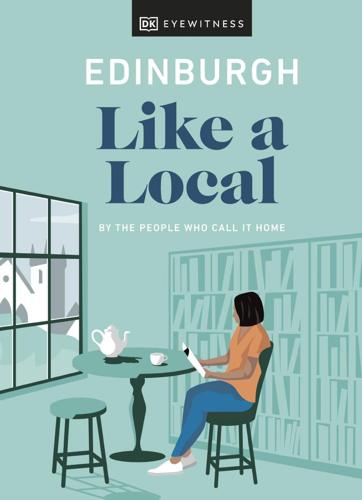
Edinburgh Like a Local: By the People Who Call It Home
by
Dk Eyewitness
Published 28 Sep 2021
Map 3; Holyrood Road, Holyrood; ///clean.hung.issue; www.dynamicearth.co.uk Far from the stuffy displays and “no touching” policy of traditional NATIONAL MUSEUM OF SCOTL AND museums, this interactive experience encourages visitors to get hands-Map 1; Chambers Street, Old Town; ///beyond.home.joined; on with the exhibits. Melt your fingertips into a giant ice cap, travel www.nms.ac.uk back to the beginning of time in the Deep Time Machine, explore the Spread across four storeys and two wings (the “old bit” and the “new depths of the world’s deepest oceans and journey across the universe bit”) are long-extinct species housed in glass cases, a T-Rex skeleton at the speed of light. Documenting over 4 billion years of history may and ancient Egyptian coffins that give visitors the heebie-jeebies.
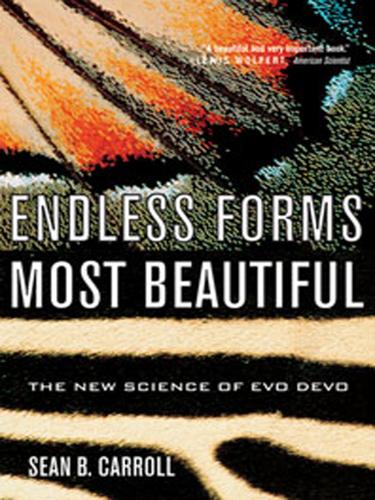
Endless Forms Most Beautiful: The New Science of Evo Devo
by
Sean B. Carroll
Published 10 Apr 2005
Extrapolating from comparisons of vertebrates he said, “Our ancestor was an animal which breathed water, had a swim bladder, a great swimming tail, an imperfect skull, and undoubtedly was an hermaphrodite! Here is a pleasant genealogy for mankind.” The discoveries of similarities stretching across most of the animal kingdom allow us to glimpse even further into deep time for an earlier creature, a beast that makes Darwin’s ancestor seem downright sophisticated. Be proud of your heritage. The Cambrian Explosion: So Many Arthropods, So Little Time The geological boundary of the beginning of the Cambrian period has been dated to 543 ± 1 million years ago.

Cognitive Gadgets: The Cultural Evolution of Thinking
by
Cecilia Heyes
Published 15 Apr 2018
The Evolved Apprentice. Cambridge, MA: MIT Press. Sterelny, K. (2017). Cultural evolution in California and Paris. Studies in the History and Philosophy of Biological and Biomedical Sciences, 62, 42–50. Sterelny, K. (in press). Culture and the extended phenotype: Cognition and material culture in deep time. In A. Newen, L. de Bruin, and S. Gallagher (eds.), The Oxford Handbook of Cognition: Embodied, Embedded, Enactive and Extended. Oxford: Oxford University Press. Sterelny, K., Smith, K. C., and Dickison, M. (1996). The extended replicator. Biology and Philosophy, 11(3), 377–403. Street, J. A., and Dąbrowska, E. (2010).
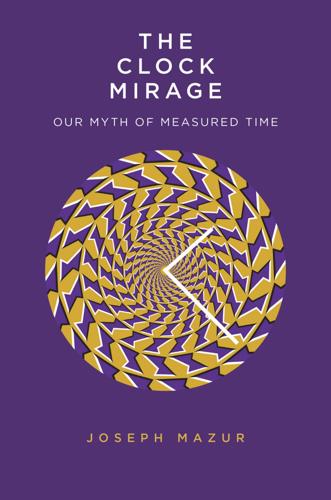
The Clock Mirage: Our Myth of Measured Time
by
Joseph Mazur
Published 20 Apr 2020
The twentieth-century paleontologist and evolutionary biologist Stephen Jay Gould wrote, “Fossils, to Hutton, are immanent properties of time’s cycle.”8 Hutton’s theories were based on the infant field of geology, where time was not simply the conceptual clock of relatively short historical changes but rather what the American writer John McPhee once called “deep time.” McPhee coined the term in his book Basin and Range as the unfathomably long expanses of geological changes in rock formation. Referring to Hutton’s uniformitarianism, by which geological shifts were incredibly slow, McPhee wrote that rock-earth changes required expanses of time “in quantities no mind had yet conceived.”9 Countering the older theory of catastrophism, uniformitarianism awakened scientists to new thoughts about the age of the earth.
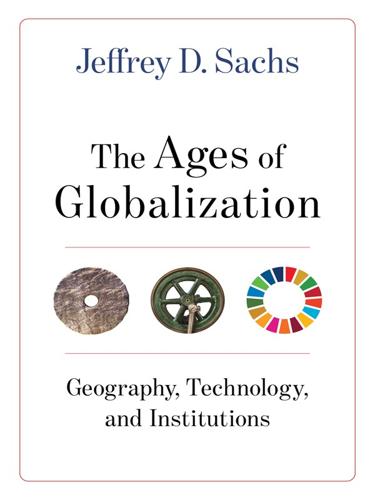
The Ages of Globalization
by
Jeffrey D. Sachs
Published 2 Jun 2020
Human Society in the Upper Paleolithic The contours of human society in the Upper Paleolithic are of great interest to us. Knowing more about these early societies would help us understand our core human nature, before the overlays of sedentism, agriculture, and modern culture. Most of this prehistory is lost in the mist of deep time. Nonetheless, intrepid scholars, using the tools of a variety of disciplines—prehistoric anthropology, archeology, prehistoric linguistics, genetics, and the anthropology of modern foraging societies—have been able to make informed judgments about key features of Upper Paleolithic foraging societies: the size of communities, their internal hierarchical structures, in-group versus out-group behavior, and war and peace.

The Twittering Machine
by
Richard Seymour
Published 20 Aug 2019
We take a part of ourselves and turn it into physical inscriptions which outlive us. So that a future reader can breathe, in the words of Seamus Heaney, ‘air from another life and time and place’. When we write, we give ourselves a second body.43 There is something miraculous about this, the existence of a ‘scripturient’ animal, barely a dot in the deep time of the planet’s history. Early theories of writing could hardly resist seeing it as divine – ‘God-breathed’, as the Book of Timothy has it. The Sumerians regarded it as a gift from God, alongside woodwork and metalwork – a telling juxtaposition, as if writing was indeed just another craft, another textile, as in Inca civilization.

New Dark Age: Technology and the End of the Future
by
James Bridle
Published 18 Jun 2018
And buried beneath the permafrost, the vault is also a natural deep freezer: powered by locally mined coal, it’s refrigerated to minus eighteen degrees Celsius, and even if these machines were to fail, the local bedrock remains below freezing all year round. The Seed Vault is an attempt to create a sanctuary that is both geographically and temporally isolated: suspended in neutral territory and the deep time of the Arctic winters. Seed banks are crucial to maintaining some semblance of genetic biodiversity. They are the fruit of a movement that started in the 1970s, with the realisation that the Green Revolution in agriculture was causing farmers to abandon their usual seeds, locally developed over centuries, for new hybrids.

Dinosaurs Rediscovered
by
Michael J. Benton
Published 14 Sep 2019
Symposium of the Zoological Society of London 52, 575–96 *Brusatte, S. L. 2012. Dinosaur paleobiology. Wiley, New York and Oxford The best student textbook about dinosaurs. Gauthier, J. 1986. Saurischian monophyly and the origin of birds. Memoirs of the California Academy of Science 8, 1–55 *Gee, H. 2008. Deep time: Cladistics, the revolution in evolution. Fourth Estate, London A great introduction to cladistics and all the squabbles. Hennig, W. 1950. Grundzüge einer Theorie der phylogenetischen Systematik. Deutscher Zentralverlag, Berlin Hennig, W. 1966. Phylogenetic systematics, translated by D. Davis and R.

Less Is More: How Degrowth Will Save the World
by
Jason Hickel
Published 12 Aug 2020
Degrowth Sometimes scientific evidence conflicts with the dominant world view of a civilisation. When that happens, we have to make a choice. Either we ignore science, or we change our world view. When Charles Darwin first proved that all species, including humans, were descended from common ancestors over deep time, he was laughed off the stage. The notion that humans evolved from non-humans, instead of being created in the image of God; and the notion that the history of life on this planet stretches back much further than the few thousand years the Bible seems to suggest – at the time these ideas were utterly unacceptable.
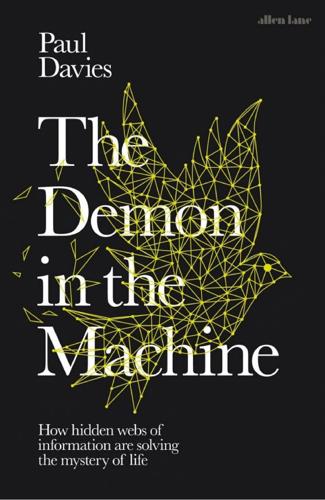
The Demon in the Machine: How Hidden Webs of Information Are Finally Solving the Mystery of Life
by
Paul Davies
Published 31 Jan 2019
Biochemist Lynn Caporale writes: ‘Rejecting entirely random genetic variation as the substrate of genome evolution is not a refutation, but rather provides a deeper understanding, of the theory of natural selection of Darwin and Wallace.’21 The refinement that emerges from these recent experiments displaying a Lamarckian flavour is that nature selects not just the fittest organisms but the fittest survival strategies too. The foregoing ideas illustrate how organisms use information from the past to chart the future. This information is inherited both over deep time (for example, the contingency genes I discussed here) and epigenetically, from the previous generation. Life may therefore be described as an informational learning curve that swoops upwards. Organisms do not have to proceed by trial and error and ‘reinvent the wheel’ at each generation. They can profit from life’s past experience.
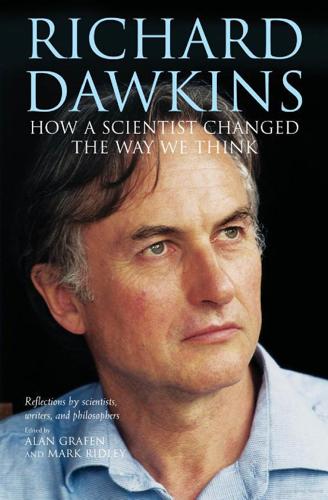
Richard Dawkins: How a Scientist Changed the Way We Think
by
Alan Grafen; Mark Ridley
Published 1 Jan 2006
Hubble subsequently discovered through this same telescope that those galaxies are all red-shifted—their light is receding from us and thus stretched toward the red end of the electromagnetic spectrum—meaning that all galaxies are expanding away from one another, the result of a spectacular explosion that marked the birth of the universe. It was the first empirical data indicating that the universe had a beginning, and thus was not eternal. What could be more aweinspiring—more numinous, magical, spiritual—than this cosmic visage of deep time and deep space? Since I live in Altadena, on the edge of a cliff in the foothills of the San Gabriel mountains atop which Mount Wilson rests, I have had many occasions to make the trek to the telescopes. In November 2004 I arranged for a visit to the observatory for Richard, who was in town on a book tour for The Ancestor’s Tale.
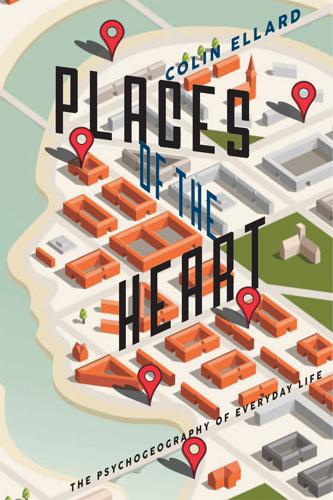
Places of the Heart: The Psychogeography of Everyday Life
by
Colin Ellard
Published 14 May 2015
MATR, which stands for Mobile Apparatus for Temporality Research, consisted of an app which tracked the location of the user on a specially constructed map containing much more than geographic features. The MATR map also included data relating to the historical climate, ancient geography, and human history of the locations for which it coded. Because these data included the history of a place over the long reach of time, MATR called them “deep time variables.” This complicated amalgam of geographic and human data was mixed down to a sound that users of MATR could hear on headphones as they walked from place to place. The intention of the MATR app was much more ambitious than an application designed to help us treasure-seek for beauty and quietness.
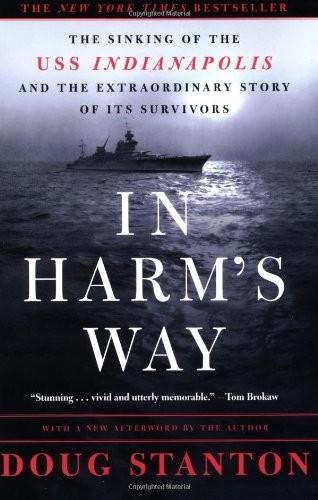
In Harm's Way: The Sinking of the U.S.S. Indianapolis and the Extraordinary Story of Its Survivors
by
Doug Stanton
Published 2 May 2003
“The Tragedy of the USS Indianapolis,” The Indiana Historical Society, www.indianahistory.com. ————. “USS Indianapolis Records, 1898—1991,” The Indiana Historical Society, www.indianahistory.com. Burlage, Joc John D., USN. “Terror on the Indianapolis,” Grit, December 14, 1975. Cuadros, Paul. “In Shallow Waters Danger Runs Deep,” Time, September 4, 2000. Etheridge, Kenneth E. “The Agony of the Indianapolis,” American Heritage 33, no. 5 (August—September 1982). Finneran, Patrick J. “A Short History of the USS Indianapolis,” The USS Indianapolis (CA 35) Survivors Organization, www.ussindianapolis.org. Groves, R. R., Major General.

Climbing Mount Improbable
by
Richard Dawkins
and
Lalla Ward
Published 1 Jan 1996
Sherrington’s vision helped him to become one of the leading investigators of the nervous system in the first part of this century. We may profit by borrowing a parallel vision. Evolution is an enchanted loom of shuttling DNA codes, whose evanescent patterns, as they dance their partners through geological deep time, weave a massive database of ancestral wisdom, a digitally coded description of ancestral worlds and what it took to survive in them. But that is a train of thought that must wait for another book. The main lesson of this book is that the evolutionary high ground cannot be approached hastily. Even the most difficult problems can be solved, and even the most precipitous heights can be scaled, if only a slow, gradual, step-by-step pathway can be found.

The Knowledge: How to Rebuild Our World From Scratch
by
Lewis Dartnell
Published 15 Apr 2014
We’ve skipped a lot of materials science and engineering principles and only brushed over the building blocks of all stuff: the structure of the atom and the four fundamental forces of nature. Not all atoms are stable, and radioactivity offers the possibility of an appallingly destructive weapon, as well as a source of peaceful power, but also allows you to determine the age of our planet, offering a glimpse down the dizzying hole of deep time. In Earth sciences we’ve missed out on the theory of plate tectonics, for example: the mind-blowing concept that the vast continents are scudding across the surface of the planet like leaves on a windy pond, occasionally crunching into one another to crumple up entire mountain ranges. These profound realizations that the world has not always been as it is now, and is bewilderingly old, are required to understand the theory of evolution by small changes from one generation to the next.

The Sirens of Mars: Searching for Life on Another World
by
Sarah Stewart Johnson
Published 6 Jul 2020
Among the bevy of spacecraft that will soon launch toward Mars is a NASA rover that will land on the spill of lava that covers the floor of Jezero Crater. The mission’s breathtaking goal is to collect samples from Mars to be brought back to Earth at some later date, samples that not only may harbor signs of ancient life but also could give us an unprecedented look into the history of our solar system. Here on Earth, our record of deep time has been forever lost. The seas have lifted into rain, and the rain has beaten the surface bare. Our planet has swallowed itself, plate by plate. Our original crust has almost completely disappeared; all but a few patches have been dragged back into the interior. The small blocks of rock that remain—in the cherts of Australia and the greenstone belts of Greenland—have been cooked, mostly beyond recognition.
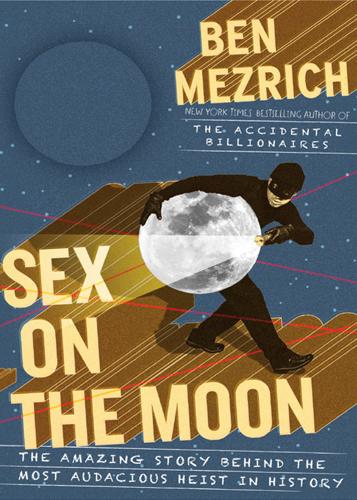
Sex on the Moon: The Amazing Story Behind the Most Audacious Heist in Histroy
by
Ben Mezrich
Published 11 Jul 2011
When he’d arrived at the museum earlier that evening, he’d been told that the samples he’d be cataloging were donated materials deemed not good enough for the collections upstairs. Though some of the rocks seemed pretty interesting to Thad—a handful of fossils and semiprecious minerals that told stories of deep time, ancient life-forms, maybe even evolution itself—the museum thought of it as mostly junk. These rocks would probably remain in this crate in the bowels of the museum far into the foreseeable future. But that didn’t mean they wouldn’t be inventoried, cataloged, and described in detail—as soon as the life returned to Thad’s shoulders.

Calling Bullshit: The Art of Scepticism in a Data-Driven World
by
Jevin D. West
and
Carl T. Bergstrom
Published 3 Aug 2020
It is a book about how we are inundated with it, about how we can learn to see through it, and about how we can fight back. First things first, though. We would like to understand what bullshit is, where it comes from, and why so much of it is produced. To answer these questions, it is helpful to look back into deep time at the origins of the phenomenon. Bullshit is not a modern invention. In one of his Socratic dialogues, Euthydemus, Plato complains that the philosophers known as the Sophists are indifferent to what is actually true and are interested only in winning arguments. In other words, they are bullshit artists.
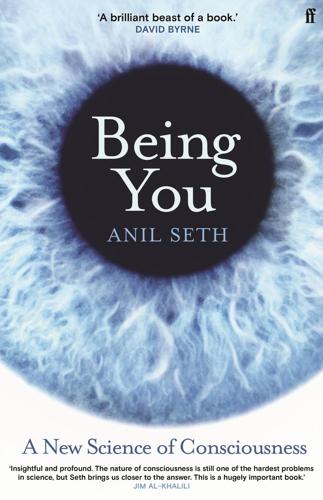
Being You: A New Science of Consciousness
by
Anil Seth
Published 29 Aug 2021
The Copernican revolution gave us a universe – one which astronomical discoveries of the last hundred years have expanded far beyond the limits of human imagination. Charles Darwin’s theory of evolution by natural selection gave us a family, a connection to all other living species and an appreciation of deep time and of the power of evolutionary design. And now the science of consciousness, of which the beast machine theory is just one part, is breaching the last remaining bastion of human exceptionalism – the presumed specialness of our conscious minds – and showing this, too, to be deeply inscribed into the wider patterns of nature.
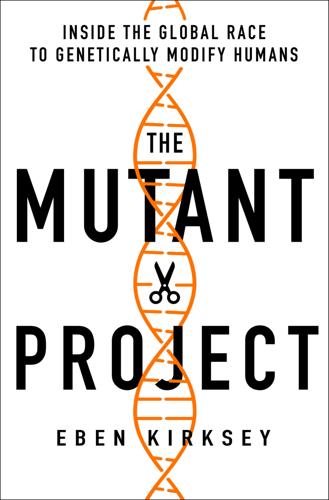
The Mutant Project: Inside the Global Race to Genetically Modify Humans
by
Eben Kirksey
Published 10 Nov 2020
BGI was already 70 percent of the way toward its goal of sequencing all important agricultural plants. The facility already had over 3 million complete human genomes stored inside, more than any other facility on the planet. The China National GeneBank was steadily expanding its DNA archive. A looping video presentation playing on a large concave wall looked back into deep time and also offered a portal into the near future. The video started with a picture of the DNA double-stranded helix and proclaimed: “Life starts with genes.” The evolution of life was depicted as a simple cartoon, with line drawings illustrating the morphing of forms, from single-celled microbes to worms, fish, dinosaurs, mice, then humans.
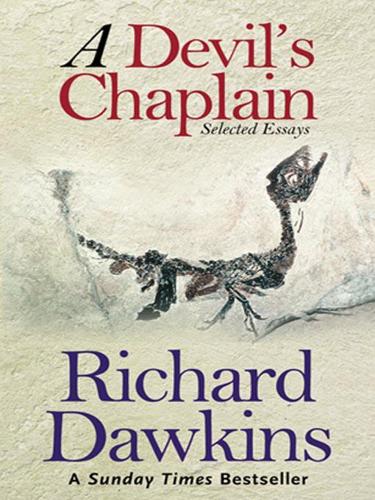
A Devil's Chaplain: Selected Writings
by
Richard Dawkins
Published 1 Jan 2004
are caught ‘in flagrante delicto’ and discover ‘for themselves what, according to Shakespeare, “every wise man’s son doth know” – “journeys end in lovers meeting” ’. This is indeed a beautiful book, the pages glowing with a naturalist’s love of life and a historian’s respect and affection for his subjects, the vision extended and clarified by a geologist’s familiarity with ‘deep time’. To borrow a Medawarian phrase and like Peter Medawar himself, Stephen Gould is an aristocrat of learning. These are both extraordinarily gifted men, with some of the arrogance natural to aristocrats and those who have always been top of every class of which they have been members, but big enough to get away with it and generous enough to rise above arrogance too.
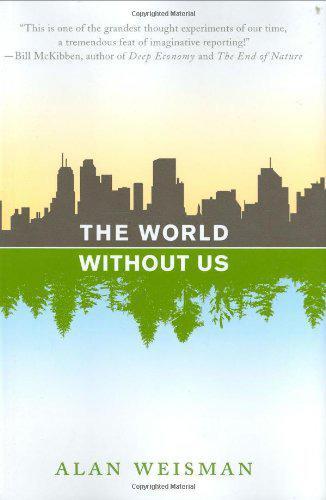
The World Without Us
by
Alan Weisman
Published 5 Aug 2008
.: CABI Publishing, 2005. Andrady, Anthony, editor. Plastics and the Environment. Hoboken: John Wiley & Sons, Inc., 2003. Audubon, John James. Ornithological Biography, or an Account of the Habits of the Birds of the United States of America. Edinburgh: Adam Black, 1831. Benford, Gregory. Deep Time. New York: Avon Books, 1999. Bobiec, Andrzej. Preservation of a Natural and Historical Heritage as a Basis for Sustainable Development: A Multidisciplinary Analysis of the Situation in Białowiea Primeval Forest, Poland. Narewka, Poland: Society for Protection of the Białowiea Primeval Forest (TOPB), 2003.
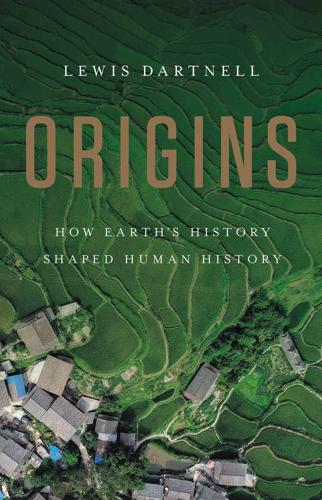
Origins: How Earth's History Shaped Human History
by
Lewis Dartnell
Published 13 May 2019
And as we are only one of a number of similar intelligent, tool-using hominin species to have evolved in Africa, what were the ultimate reasons why Homo sapiens prevailed to inherit the Earth as the sole survivor of our evolutionary branch? GLOBAL COOLING Our planet is a restlessly active place, constantly changing its face. Fast-forwarding through deep time you’d see the continents gliding between myriad different configurations, frequently colliding and welding together only to be ripped apart again, with vast oceans opening and then shrinking and disappearing. Great chains of volcanoes pop and fizzle, the ground shivers with earthquakes, and towering mountain ranges crumple out of the ground before being ground away back to dust.
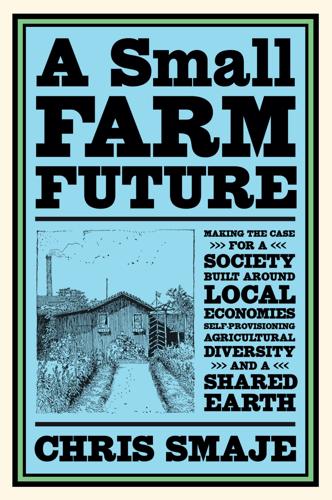
A Small Farm Future: Making the Case for a Society Built Around Local Economies, Self-Provisioning, Agricultural Diversity and a Shared Earth
by
Chris Smaje
Published 14 Aug 2020
Nature doesn’t care about this; evolution isn’t oriented to long-term goals or ideas like the good of the planet. But there are long-term energy dynamics in ecosystems towards stress-tolerant and structurally complex states to which all organisms, including humans, are evolutionarily adapted through deep time, and which for all our technical prowess humans haven’t yet managed to transcend. This is why our non-local sourcing of nutrients has got us into our present mess. We’ve now created a truly planet-wide ruderal civilisation, largely by using fossil fuels to break local resource constraints and drive ecological dynamics against their normal successional direction on a vast scale.
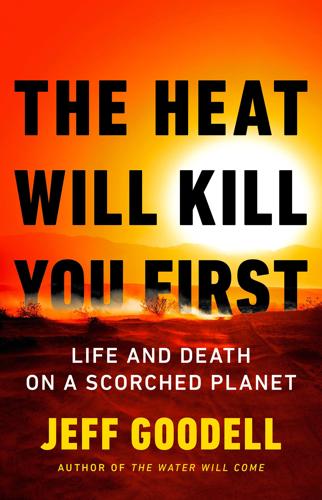
The Heat Will Kill You First: Life and Death on a Scorched Planet
by
Jeff Goodell
Published 10 Jul 2023
They suck up water from the ground and sweat it out through their leaves, which cools the air (think of them as mini–air conditioners). And of course they provide shade to all creatures great and small, as well as to the soil around them, which helps to reduce water loss through evaporation. As anyone who has taken a walk through a city park knows, they also offer mental health benefits to stressed-out urbanites. Trees are our deep-time evolutionary companions, fellow living things that we have spent millions of years leaning against, climbing, and worshipping. As part of Hidalgo’s urban forest initiative, the city of Paris plans to plant 170,000 new trees by 2026. That may sound like a lot. And in some ways, it is. But let’s put it into perspective.

When It All Burns: Fighting Fire in a Transformed World
by
Jordan Thomas
Published 27 May 2025
Sequoias are among the oldest organisms in existence, with fire-resistant bark several feet thick and crowns that can recover when 90 percent is scorched. They even rely on fire to reproduce, as flames crack their cones so seedlings can germinate. Now, the same ecological force they once depended upon is pushing them toward extinction. Sequoias’ lives are monuments of deep time. Their death would signify something else. If we could not hold this ridge against the megafire, the sequoias would become the largest torches on earth, carrying flames higher than the Statue of Liberty. After three thousand years of life, they would become charred monuments to a passing era, symbols of a violent future.

Warnings
by
Richard A. Clarke
Published 10 Apr 2017
The greatest scientists in history are great precisely because they broke with consensus.3 In the Cassandra Events we have discussed in the previous chapters, the majority of the “experts” agreed that the problem was not as bad as the warning being given: the levies would hold, the banks couldn’t fail, Arab states didn’t invade other Arab states . . . The Cassandra is the outlier. Decision makers throughout history have found comfort in the consensus of experts and rejected or persecuted the outlier who was often later proven correct. Copernicus and heliocentrism, Darwin and evolution, Hutton and deep time—the history of science is replete with discoveries, usually by one individual, that upended consensus. If the issue or risk defies a long-standing consensus because of new evidence, it should be further examined despite being a minority view. *MAGNITUDE OVERLOAD: Overly large-scale events or phenomena can have two negative effects on decision makers.
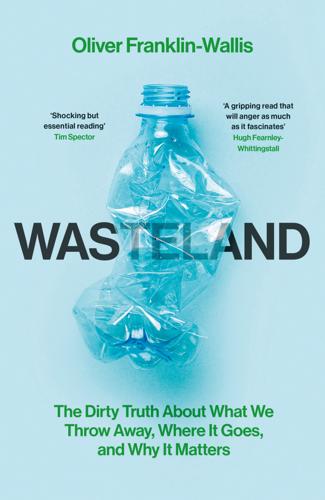
Wasteland: The Dirty Truth About What We Throw Away, Where It Goes, and Why It Matters
by
Oliver Franklin-Wallis
Published 21 Jun 2023
Human beings – lucky ones – might survive a few decades, empires a few centuries, religions a few millennia. The oldest known cave art dates back 46,000 years or so, the oldest writing just 5,600. A hundred thousand years ago the Earth was still in the grips of the last Ice Age, homo sapiens scraping for survival alongside Neanderthals and giant ground-sloths. But nuclear waste forces us to think in deep time; not in lifetimes, but in half-lives. The waste buried at Onkalo will remain radioactive for tens of millennia. Which forces questions, like: how do we build something to last longer than anything in human history? And, what do we tell our descendants about the danger we have left for them? In 1980, the United States Department of Energy gathered a group of linguists, archaeologists, psychologists, and designers to consider this problem.

More Everything Forever: AI Overlords, Space Empires, and Silicon Valley's Crusade to Control the Fate of Humanity
by
Adam Becker
Published 14 Jun 2025
It took five thousand years to go from the horse-drawn cart to the car, but less than a century to go from the car to landing on the Moon; there were at least two thousand years between homing pigeons and the telegraph, but only about 130 years between the telegraph and the beginning of the internet. Nor does Kurzweil think that the law of accelerating returns is limited to technology. According to him, exponential trends can be traced back through the deep time of evolution as well. “Exponential growth is a feature of any evolutionary process,” he writes.20 “The evolution of life-forms required billions of years for its first steps (primitive cells, DNA), and then progress accelerated. During the Cambrian explosion, major paradigm shifts took only tens of millions of years.
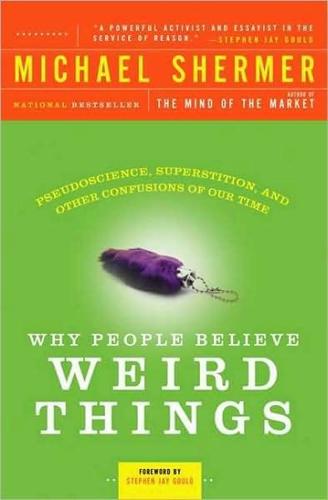
Why People Believe Weird Things: Pseudoscience, Superstition, and Other Confusions of Our Time
by
Michael Shermer
Published 1 Jan 1997
In particular, of course, there are many different types of creationists, including young-Earth creationists, who hold to the 24-hour-day interpretation; old-Earth creationists, who are willing to take the biblical days as figurative speech representing geological epochs; and gap-creationists, who allow for a gap of time between the initial creation and the rise of humans and civilization (thus adapting to scientific notions of deep time, dating back billions of years). Card-carrying creationists are small in number. But what they lack in numbers they make up in volume. And they have been able to touch the nerve that somewhere deep in the national psyche connects many Americans to our country's religious roots. We may be a pluralistic society—melting pots, salad bowls, and all that—but Genesis remains at our beginning.
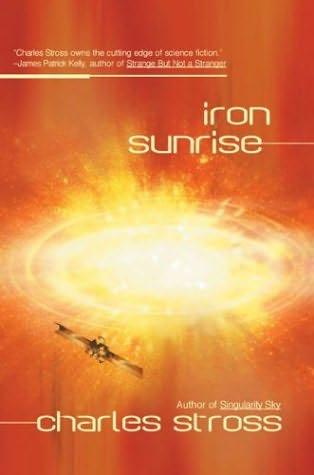
Iron Sunrise
by
Stross, Charles
Published 28 Oct 2004
It does so by recursively transmitting information back in time to itself, which is used to allow it to edit out temporal anomalies. Such temporal paradoxes are an inevitable side effect of permitting faster-than-light travel, or of operating an ensemble intelligence employing timelike logic mechanisms. I receive orders from deep time and execute them knowing that in doing so I ensure that the descendant state vector is going to exist long enough to issue those orders. If I do not receive such orders, then it may be that the events are not observable by me. Or my future state vector. This situation may occur if the Eschaton is disrupted or edited out of the future of this time-line.

Vertical: The City From Satellites to Bunkers
by
Stephen Graham
Published 8 Nov 2016
Sebald’s Apocalyptic Vision: The World Will End in 2013’, New Statesman, 4 June 2013. 2Pascal Peduzzi, ‘Sand, Rarer Than One Thinks’, Environmental Development 11, 2014, p. 208. 3Simon Price, Jonathan Ford, Anthony Cooper and Catherine Neal, ‘Humans as Major Geological and Geomorphological Agents in the Anthropocene: The Significance of Artificial Ground in Great Britain’, Philosophical Transactions of the Royal Society A: Mathematical, Physical and Engineering Sciences 369:1938, 2011, pp. 1056–84. 4Roger Hooke, ‘On the History of Humans as Geomorphic Agents’, Geology 28:9, 2000, pp. 843–6. 5Gavin Bridge, ‘Material Worlds: Natural Resources, Resource Geography and the Material Economy’, Geography Compass, 3:3, 2009, pp. 1217–44. 6Seth Denizen, ‘Three Holes: In the Geological Present’, in Etienne Turpin, ed., Architecture in the Anthropocene: Encounters among Design, Deep Time, Science and Philosophy, New York: Anexact, 2013, p. 40. 7Price, ‘Humans as Geomorphic Agents’. 8Matt Edgeworth, ‘The Relationship between Archaeological Stratigraphy and Artificial Ground and Its Significance in the Anthropocene’, Geological Society, London, Special Publications 395:1, 2014, pp. 91–108. 9Eric Sanderson, Mannahatta: A Natural History of New York City, New York: Abrams, 2013. 10See Christian Neal MilNeil, ‘Inner-City Glaciers’, in Elizabeth Ellsworth, Jamie Kruse and Reg Beatty, eds, Making the Geologic Now: Responses to Material Conditions of Contemporary Life, New York: Punctum Books, 2013, pp. 79–81. 11Jamie Kruse and Elizabeth Ellsworth, Geologic City: A Field Guide to the Geoarchitecture of New York, New York: Smudge Studio, 2011. 12See Björn Wallsten, The Urk World: Hibernating Infrastructures and the Quest for Urban Mining, Linköping: Linköping University, 2015. 13Björn Wallsten, ‘Urks and the Urban Underworld as Geosocial Formation’, Science, Technology and Human Values, forthcoming. 14James McCarthy and Kate Driscoll Derickson, ‘Manufacturing Consent for Engineering Earth: Social Dynamics in Boston’s Big Dig’, in Stan Brunn, ed., Engineering Earth, Rotterdam: Springer, 2011, pp. 697–713. 15Cited in Pete Brook, ‘The Toxic Landscape of Johannesburg’s Gold Mines’, Wired, 18 June 2014. 16See Martin J.

Whole Earth: The Many Lives of Stewart Brand
by
John Markoff
Published 22 Mar 2022
(The religion notion was quickly shelved after Brand reconsidered the value of transforming the clock into an object of worship.) Brand and Hillis continued to discuss possibilities, and the clock project slowly evolved into a massive mechanical mechanism buried inside a mountain for tracking “deep time.” With the desire that it would become a positive icon, a symbol to inspire societal reflection, they decided that visiting the clock should require the equivalent of a pilgrimage. It would be almost four years before Hillis would publicly describe the clock project at a symposium at the Getty Museum in Los Angeles, and another two years before an initial prototype was completed.

Where Bigfoot Walks: Crossing the Dark Divide
by
Robert Michael Pyle
Published 31 Jul 2017
Interpreted in one way, modern physics suggests that the Kwakiutl could be right: Dzonoqua today might be here and rock-solid real and tomorrow exist on the other side of a dimension that hasn’t been named or numbered. Of course, you won’t find a physicist who really supports the notion of some Bigfoot enthusiasts (those without a boat, in Mojo’s words) that Bigfoot moves between dimensions at will. Quantum mechanics tend to tinker at the edges of universes and in deep time and other imponderables, not so much in the here and now. But the point—and the irony—is that we seem to be coming back, kicking and screaming, into an intellectual environment where logical positivism has to scramble to stay on top. Realities differ. I have a brother whose reality today is vastly different from the one he perceived prior to a head-on encounter with a cattle truck.
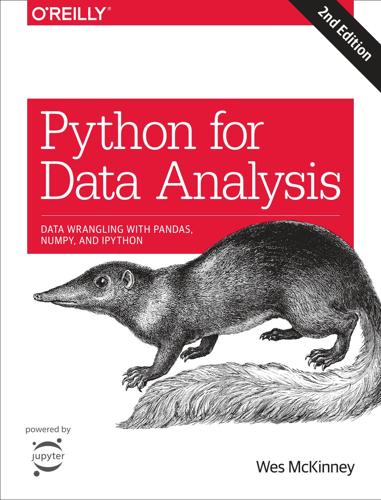
Python for Data Analysis: Data Wrangling with Pandas, NumPy, and IPython
by
Wes McKinney
Published 25 Sep 2017
At the time, I had a distinct set of requirements that were not well addressed by any single tool at my disposal: Data structures with labeled axes supporting automatic or explicit data alignment — this prevents common errors resulting from misaligned data and working with differently indexed data coming from different sources Integrated time series functionality The same data structures handle both time series data and non–time series data Arithmetic operations and reductions that preserve metadata Flexible handling of missing data Merge and other relational operations found in popular databases (SQL-based, for example) I wanted to be able to do all of these things in one place, preferably in a language well suited to general-purpose software development. Python was a good candidate language for this, but at that time there was not an integrated set of data structures and tools providing this functionality. As a result of having been built initially to solve finance and business analytics problems, pandas features especially deep time series functionality and tools well suited for working with time-indexed data generated by business processes. For users of the R language for statistical computing, the DataFrame name will be familiar, as the object was named after the similar R data.frame object. Unlike Python, data frames are built into the R programming language and its standard library.
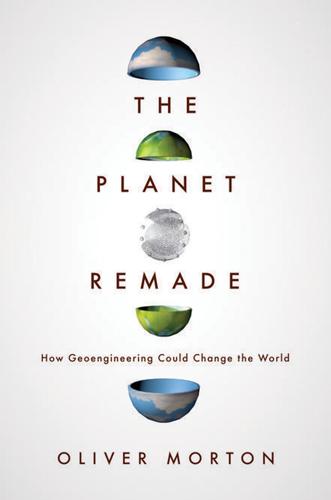
The Planet Remade: How Geoengineering Could Change the World
by
Oliver Morton
Published 26 Sep 2015
But I think only one person other than Brown (Nils Ekholm, a friend of Arrhenius) suggested increasing the atmosphere’s carbon dioxide might be undertaken as an end in itself, rather than merely welcomed as a side effect of industrial modernization. And since the 1970s, the emphasis has been very much on the opposite process. Returning from the previous chapters’ excursions into non-climate geoengineering and deep time with, I hope, a new sense of scale, it is to these geoengineering techniques aimed at carbon-dioxide reduction that we now turn. People wanting to suck carbon dioxide out of the atmosphere start off with clear advantages over geoengineers imagining other interventions. Unlike the would-be nitrogen geoengineers of the early twentieth century, they already know that humans can influence the carbon cycle on a global scale – there are hundreds of billions of tonnes of excess carbon in the planet’s atmosphere, oceans and plant life bearing witness to the fact.
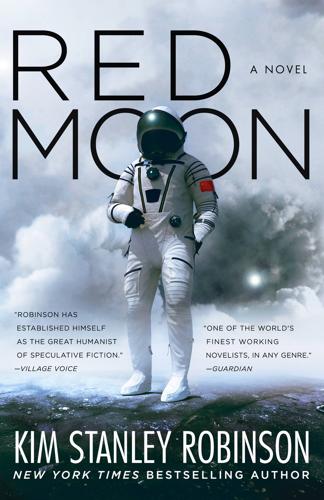
Red Moon
by
Kim Stanley Robinson
Published 22 Oct 2018
From rim to floor the drop was thirteen vertical kilometers, meaning about forty-five thousand feet, and for a few minutes they could see that drop for what it was. He was reminded that some impacts were so violent they changed everything, even the axis of the world. This feng shui perception, mixing geology and deep time into a history of everything, overwhelmed him: they were in it, they were part of it even now, or especially now. A bang like this could happen to them. On they flew, moving at jet speed a centimeter above the ground, over the piste and its euclidean line. In another hour they would reach the Peaks of Eternal Light and be thrown back into their troubles.

The Goodness Paradox: The Strange Relationship Between Virtue and Violence in Human Evolution
by
Richard Wrangham
Published 29 Jan 2019
I approach the topic through the eyes of a chimpanzee-watcher who has walked, watched, and listened in many habitats of East and Central Africa. Those of us privileged to have spent days alone with apes have felt touched by Pleistocene breezes. The romance of the past, the story of our ancestors, is a thrill, and innumerable mysteries remain for future generations seeking the origins of the modern mind in deep time. Enlarged understanding of our prehistory and of who we are will not be the only reward. Dreams inspired by the African air can yet generate a stronger and more secure view of ourselves, if we open our minds to worlds beyond those that we know well. Introduction Virtue and Violence in Human Evolution ADOLF HITLER, WHO ordered the execution of some eight million people and was responsible for the deaths of many millions more, was said by his secretary Traudl Junge to have had an agreeable, friendly, and paternal manner.

Land: How the Hunger for Ownership Shaped the Modern World
by
Simon Winchester
Published 19 Jan 2021
Little, Brown. 2008. Grandin, Greg. The End of the Myth: From the Frontier to the Border Wall in the Mind of America. New York. Henry Holt. 2019. Greer, Allan. Property and Dispossession: Natives, Empire and Land in Early Modern America. Cambridge, UK. Cambridge University Press. 2018. Griffiths, Billy. Deep Time Dreaming: Uncovering Ancient Australia. Carlton, VIC. Black Inc. 2018. Hamsun, Knut. Growth of the Soil. (Orig: Markens Grode). New York. Knopf. 1921. Hardy, Roger. The Poisoned Well: Empire and Its Legacy in the Middle East. New York. Oxford University Press. 2017. Hewitt, Rachel. Map of a Nation: A Biography of the Ordnance Survey.

Legacy
by
Greg Bear
Published 1 Jan 1995
Together: “…_and purify, bind my atoms to something higher, send my light far to others who truly see. In the arms of great galaxies there lies salvation, and we there will go, to dance in endless joy the innocent dance free of the hand._” The old man’s voice faded, and I finished, “In the name of the Good Man, the secrets of Logos, of Fate and Breath and Soul, so be it through deep time.” “You,” Fitch said, grasping my arm weakly. “Are you alone?” Tears streamed down my cheeks. “Yes,” I said. “Take the clothes. Save us from what we’ve done. May the memory of the Good Man serve you.” Fitch’s breath stopped. Here, that was enough. He was dead. The bottle of water rolled and spilled.
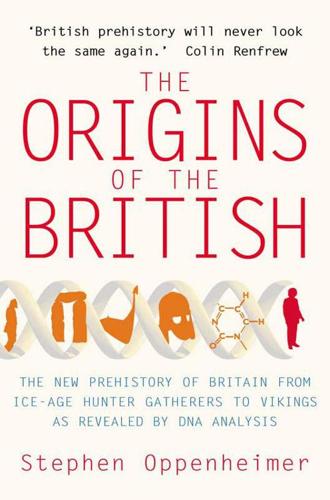
The Origins of the British
by
Stephen Oppenheimer
Published 1 Jul 2007
Time blunts the genetic reality of Celtic and Anglo-Saxon origins Theoretically, it should be possible to determine for every individual living in the British Isles approximately when each of their paternal or maternal ancestors arrived. What I am trying to do in this book is to put dates of arrival and numbers (i.e. relative fre quency) to those ancestral founding gene lines, as represented in today’s population. Clearly, the deep time perspective and the size of ancient male and female recolonizations of north-west Europe rather blunts simplistic claims, based on similarity of genetic markers, that the ancestral insular-celtic languages must have come from Spain, or that English results from a replacement of Celts by Anglo-Saxons based solely on the extraordinary genetic similarity between people of the respective regions.

The Greatest Show on Earth: The Evidence for Evolution
by
Richard Dawkins
Published 21 Sep 2009
What delayed humanity’s tumbling to that luminously simple idea which seems, on the face of it, so much easier to grasp than the mathematical ideas given us by Newton two centuries earlier – or, indeed, by Archimedes two millennia earlier? Many answers have been suggested. Perhaps minds were cowed by the sheer time it must take for great change to occur – by the mismatch between what we now call geological deep time and the lifespan and comprehension of the person trying to understand it. Perhaps it was religious indoctrination that held us back. Or perhaps it was the daunting complexity of a living organ such as an eye, freighted as it is with the beguiling illusion of design by a master engineer. Probably all those played a role.
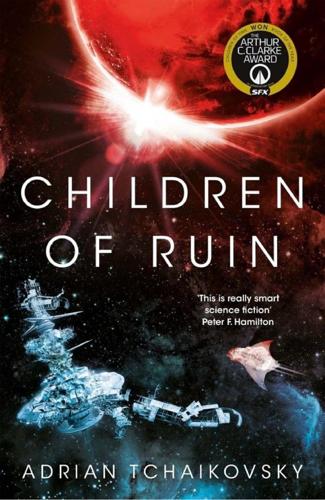
Children of Ruin
by
Adrian Tchaikovsky
Published 13 May 2019
The cruel water rushes about us, breaking up the memory of the shape of our vessel and we prepare for the Grinders and the Sieves and the Devourers and all those other forms that throng Ocean and will destroy us for their sustenance, picking apart our priceless archives of data and making of our long and varied history nothing but mere atoms and molecules to incorporate into their own substance. So we know, from narrow escapes and fugitive survivors, how it goes. Land is safer, air is safer, the ocean is a constant fight because those things within it have come from the deep time alongside us and know us. So we have recorded it in our annals. And yet, this Ocean is not the same as the Ocean anatomized in our records. The taste of it is different; it bears strange chemicals, more reminiscent of our disintegrated vessel than the Grinders and the Devourers we remember. This calls for calculation and the reconstruction of stored memories.

Year's Best SF 15
by
David G. Hartwell; Kathryn Cramer
Published 15 Aug 2010
The things we think we know—they change, Dix. And we have to change with them.” “But—” “The chimp can’t change. The rules it’s following are ten billion years old and it’s got no fucking imagination—and really that’s not anyone’s fault, that’s just people who didn’t know how else to keep the mission stable across deep time. They wanted to keep the mission on track, so they built something that couldn’t go off it; but they also knew that things change, and that’s why we’re out here, Dix. To deal with things the chimp can’t.” “The alien,” Dix says. “The alien.” “Chimp deals with it just fine.” “How? By killing it?”
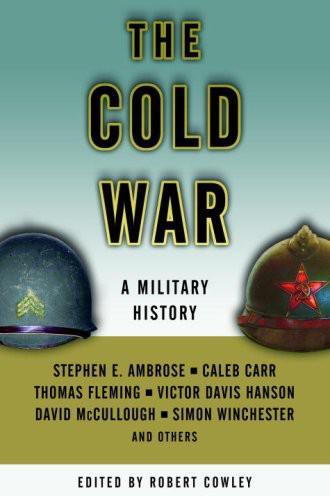
The Cold War
by
Robert Cowley
Published 5 May 1992
The third was the collapse of the Soviet empire in 1991 and the end of the Cold War. To those we must add a fourth, the Korean War. It made the Cold War a global phenomenon and led to the militarization of Asia and Europe. (You might almost think of it in historical terms as the “deep” Cold War, in the same sense that we talk of astronomical deep space or geological deep time.) American military might and the huge defense industry that supported it expanded exponentially. The free world (or what passed for it) would not be caught flat-footed by another Communist invasion, as it had been in Korea. To quote the British journalist and historian Martin Walker, “Washington and Moscow alike were learning to operate in a new strategic environment in which the need to prevent a crisis from expanding into full-scale war was more important than any local victory.

Coming of Age in the Milky Way
by
Timothy Ferris
Published 30 Jun 1988
If, then, one assumed that the earth began as a molten ball and has been cooling ever since, and if one could determine the rate at which it is cooling, it ought to be possible to calculate its age. The first significant experiments along these lines had been conducted in the 1770s by Buffon, an early champion of deep time. In a thermally stable basement laboratory, Buffon fashioned little spheres one to five inches in diameter from suitably earthy materials, heated them, determined how long it took them to cool, and extrapolated the results to the much larger sphere of the earth. He made his measurements by sitting in the dark and observing how long it took a white-hot ball to fade to invisibility, or by touching them with his hand until they seemed to have returned to room temperature.

Velocity Weapon
by
Megan E. O'Keefe
Published 10 Jun 2019
“That does not bode well.” “No, it doesn’t.” Sanda slumped back in her chair and stared at the ceiling, thumping the back of her head against the chair once—then thought better of that and stopped. “Any idea where the new Protocol is being housed, Tomas?” He shook his head. “I wasn’t able to get that deep. Time was short.” “And getting shorter. If they have another Protocol out there, then the Primes will have to abandon Ada and withdraw from this system. Okonkwo already attempted to force the evacuation of Ada once and only stopped because Lavaux and I… Never mind. What matters is the exodus was stopped, and we found you and Bero.

The Climate Book: The Facts and the Solutions
by
Greta Thunberg
Published 14 Feb 2023
. / We are determining whether we leave to our children and their children a planet that will continue drifting towards less and less inhabitable states. 1.9 This is the biggest story in the world Greta Thunberg There are currently about 7.9 billion of us living on this beautiful blue planet, peacefully circling around its sun in our tiny little corner of the great cosmos. We are all connected. Just like all other living things and beings, we can trace our origins back through deep time to the sources of life and, therefore, no matter how far from nature we distance ourselves, we are inseparable from it. All the facts and stories in this book are unnerving enough individually. But they, too, are closely joined together – just like all of us. And once you start to connect them, understanding them as part of a web of interlinked events, they quickly gain another, far more alarming meaning.
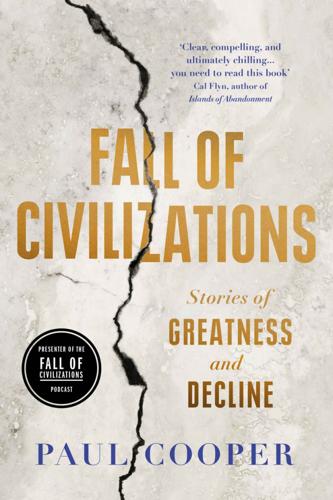
Fall of Civilizations: Stories of Greatness and Decline
by
Paul Cooper
Published 31 Mar 2024
Like Scipio watching Carthage in flames, we have always wondered: what will become of us? It is not possible to make confident pronouncements about the future, and history has always made fools of those who try. There are numerous low-probability scenarios for the collapse of modern industrial society. We know that in the context of deep time, supervolcanoes and extinction-level asteroid impacts are an eventual certainty — but the odds stand against either occurring any time soon. We have so far managed to keep the planet’s nuclear arsenal in its silos, although that danger remains ever-present. A pandemic that combines high mortality with high transmission rates is a constant threat, and we could even concern ourselves with the more fanciful ideas of rogue AIs and other futuristic spectres that for now belong to the realm of Hollywood.
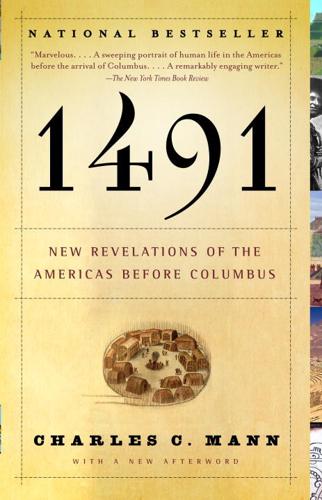
1491
by
Charles C. Mann
Published 8 Aug 2005
Wilcox, eds., Archaeology and Archaeologists in Philadelphia. Tuscaloosa, AL: University of Alabama Press, 48–87. ———. 1997. “Monte Verde and the Pleistocene Peopling of the Americas.” Science 276:754–55. ———. 1995. “Clocking the First Americans.” Annual Review of Anthropology 24:21–45. ———. 1994. “The Discovery of Deep Time: A History of Views on the Peopling of the Americas,” in R. Bonnichsen and D. G. Steele, eds., Method and Theory for Investigating the Peopling of the Americas. Corvallis, OR: Center for the Study of First Americans, 7–25. ———. 1993. Search for the First Americans. Washington, DC: Smithsonian. ———. 1992.
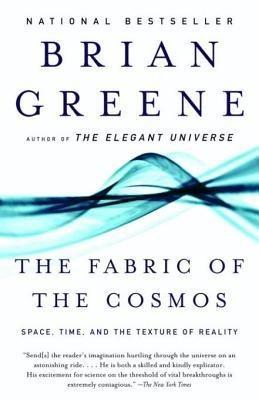
The Fabric of the Cosmos
by
Brian Greene
Published 1 Jan 2003
As yet, no one knows if this procedure for quantizing gravity is appropriate (although much progress in an offshoot of this formalism, called loop quantum gravity, has been recently achieved; see Chapter 16), so it is not clear whether the absence of an explicit time variable is hinting at something deep (time as an emergent concept?) or not. In this chapter we focus on a different approach for merging general relativity and quantum mechanics, superstring theory. 7. It is somewhat of a misnomer to speak of the “center” of a black hole as if it were a place in space. The reason, roughly speaking, is that when one crosses a black hole’s event horizon—its outer edge—the roles of space and time are interchanged.
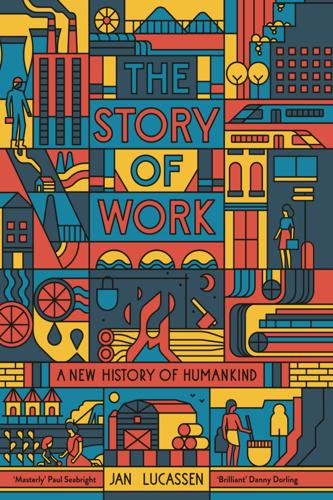
The Story of Work: A New History of Humankind
by
Jan Lucassen
Published 26 Jul 2021
Nicholas G. Rhodes Commemoration Volume (New Delhi: Manohar, 2019), pp. 173–220. Shryock, Andrew & Daniel Lord Smail (eds). Deep History: The Architecture of Past and Present (Berkeley: University of California Press, 2011). Shryock, Andrew, Thomas R. Trautmann & Clive Gamble. ‘Imagining the Human in Deep Time’, in Andrew Shryock and Daniel Lord Smail (eds), Deep History: The Architecture of Past and Present (Berkeley: University of California Press, 2011), pp. 21–52. Siegelbaum, Lewis H. Stakhanovism and the Politics of Productivity in the USSR, 1935–1941 (Cambridge: CUP, 1988). Simitis, Spiros. ‘The Case of the Employment Relationship: Elements of a Comparison’, in Willibald Steinmetz (ed.), Private Law and Social Inequality in the Industrial Age: Comparing Legal Cultures in Britain, France, Germany and the United States (Oxford: OUP, 2000), pp. 181–202.

The Stack: On Software and Sovereignty
by
Benjamin H. Bratton
Published 19 Feb 2016
Ponder these warehouse arcades filled with incomplete things with incomplete utility that must be assembled later into metathings in order to be consumed and in order to realize their mission, a factory for 109 (people) multipled by 1028 (addresses) as potential experimental architectures. Invention depends, doesn't it, on recalculations of substance, but when or where? The deep time of comparative planetology brings with it local implementation in and as computational geopolitics. Instead of driving a new condition to emerge at some postponed launch event (next fiscal quarter, after the rebuilding of the temple, the coming of the multitude's sovereignty, or whatever), this recalculation would perhaps do so here and now in this space through the resorted synchronic field of the longest possible present moment.

To Sleep in a Sea of Stars
by
Christopher Paolini
Published 14 Sep 2020
The only thing they knew for sure was that the Beacon was around sixteen thousand years old. And even that was merely a rough estimate based on radiometric dating. Kira had an uncomfortable suspicion she might never find out whether or not the makers of the Beacon had anything to do with the room she’d fallen into. Not even if she lived for several hundred more years. Deep time was slow to surrender its secrets, if ever it did. She sighed and dragged the tines of her fork across the side of her neck, enjoying the sensation of the metal tips on her dry skin. “Who cares about the Beacon,” said Seppo, hopping down from his table. “What really bothers me is that we can’t even make any money off this mess.